There are numerous specialized books on tiles produced in one specific place or during one period.
We recommand these four recent books because they offer a comprehensive view of the use of ceramic tiles in architecture.
Azulejos gallery of our handmade tiles inspired by Portugal and Spain.
View Picture
View Picture
View Picture
View Picture
View Picture
View Picture
View Picture
View Picture
View Picture
View Picture
View Picture
View Picture
View Picture
View Picture
View Picture
View Picture
View Picture
View Picture
View Picture
View Picture
View Picture
View Picture
View Picture
View Picture
View Picture
View Picture
View Picture
View Picture
View Picture
View Picture
View Picture
View Picture
View Picture
View Picture
View Picture
View Picture
View Picture
View Picture
View Picture
View Picture
View Picture
View Picture
View Picture
View Picture
View Picture
View Picture
View Picture
View Picture
View Picture
View Picture
View Picture
View Picture
View Picture
View Picture
View Picture
View Picture
View Picture
View Picture
View Picture
View Picture
View Picture
View Picture
View Picture
View Picture
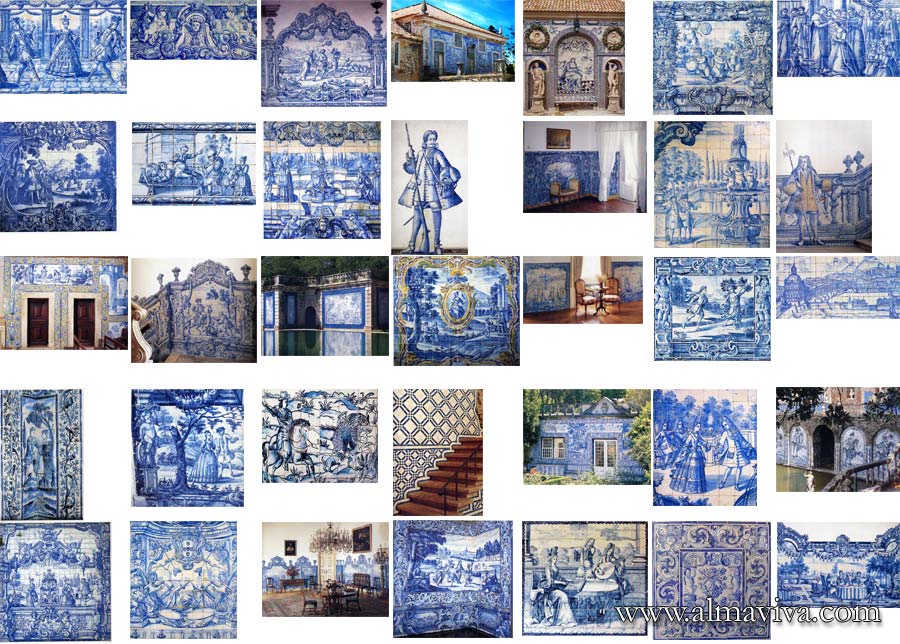
We have hundreds of images of azulejos in our archives. We use them as a source of inspiration. Here some examples of blue and white tile panels.
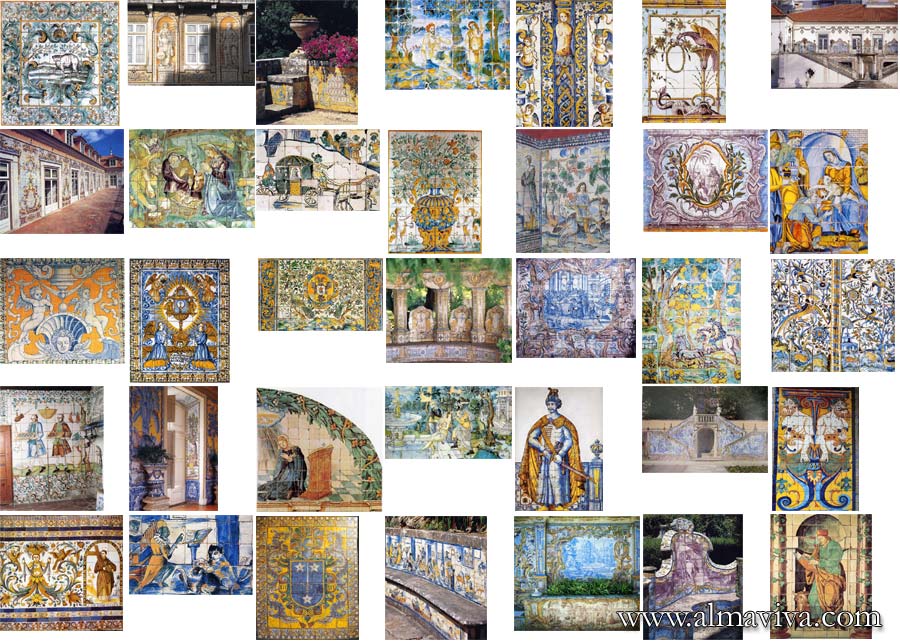
We have hundreds of images of azulejos in our archives that we use as source of inspiration. Here are some examples of polychromatic panels.
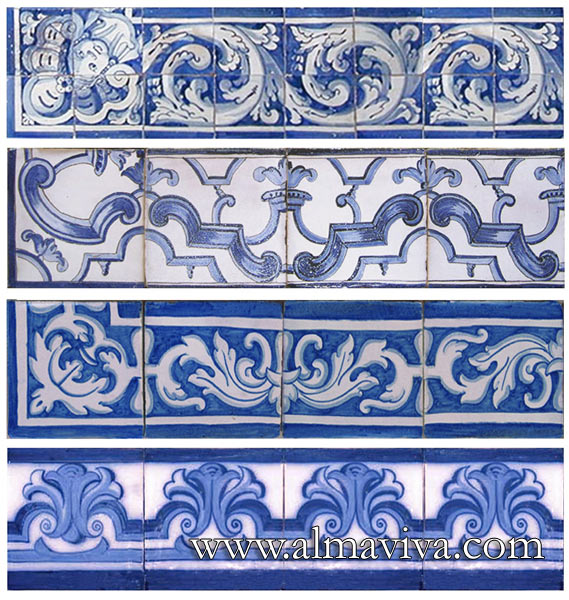
Ref. AC01 - Some examples of friezes and base boards. Here, 15x15 cm tiles (about 6''x6''), but we can make all sizes
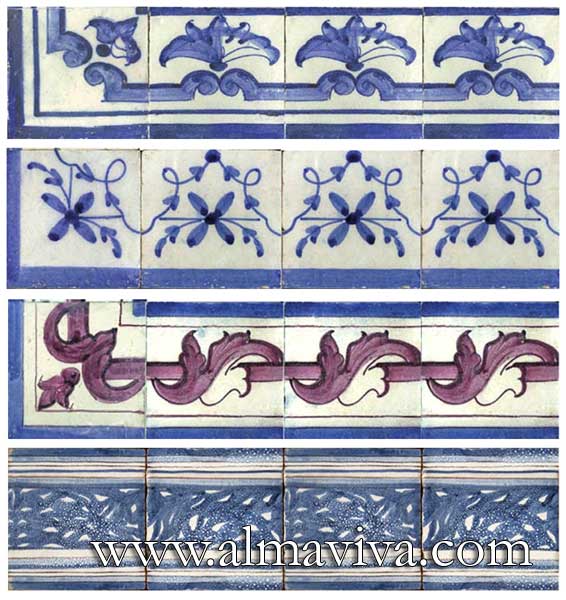
Ref. AC03 - More examples of friezes and boards. Tiles 15x15 cm (about 6''x6''), or any size
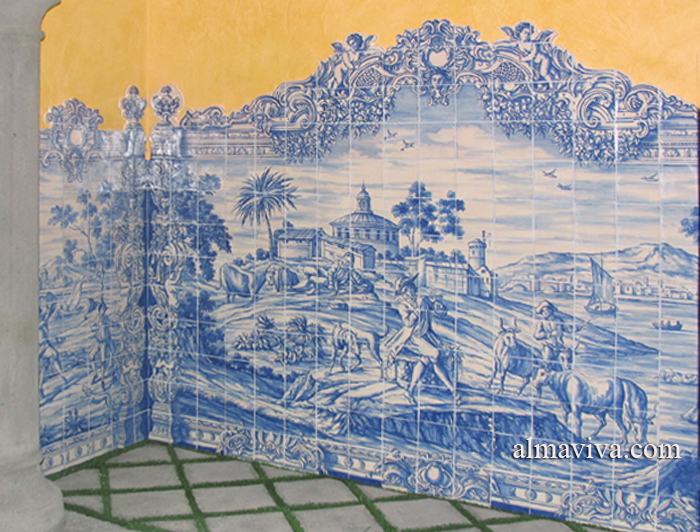
Ref. A17 - Our studio designed and produced these large murals typical of the Portuguese azulejos of the 18th c. The frame is made of cut-out tiles.
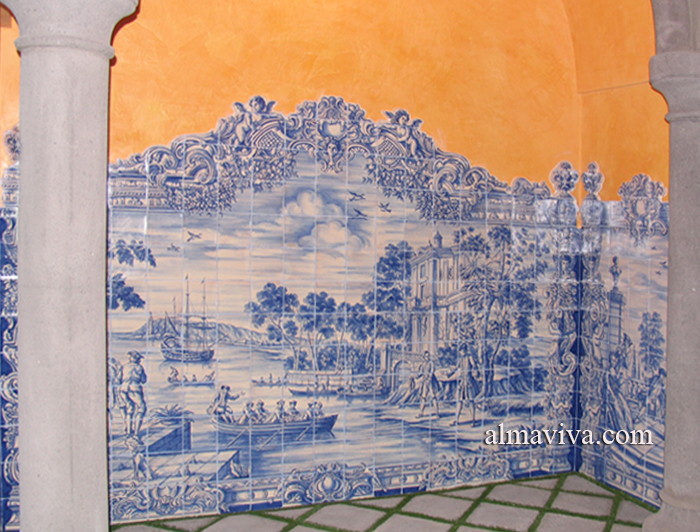
Ref. A18 - We designed and made these murals typical of the Portuguese azulejos of the 18th c.
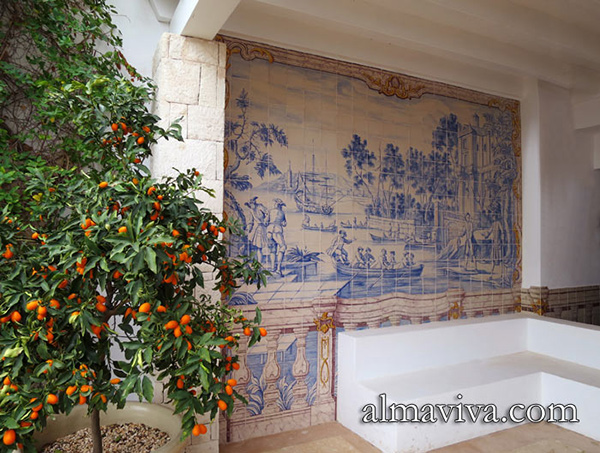
Ref. A03 - Mural painted on the model of traditional blue azulejos of the 18th c.
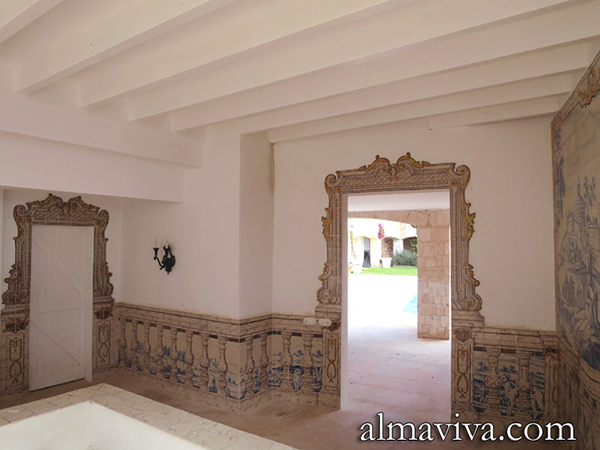
Ref. A06 - The room is surrounded by a balustrade decorated in trompe l’œil, and the doors are framed with cut tiles, as you see many in Portugal
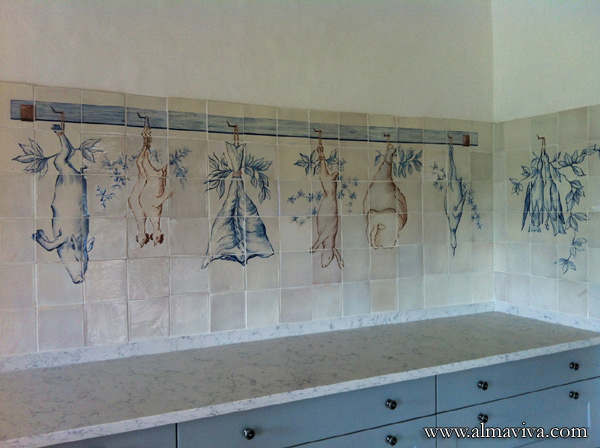
Ref. CD14 - Tiled kitchen with animals suspended in trompe l’œil effect, hand painted
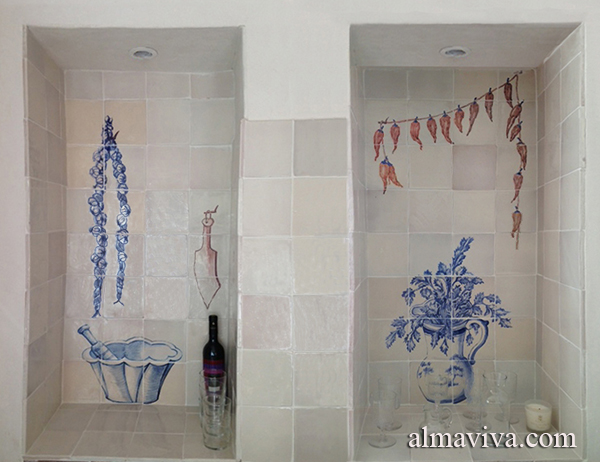
Ref. CD14 - Tiled kitchen with trompe l’œil painted azulejos
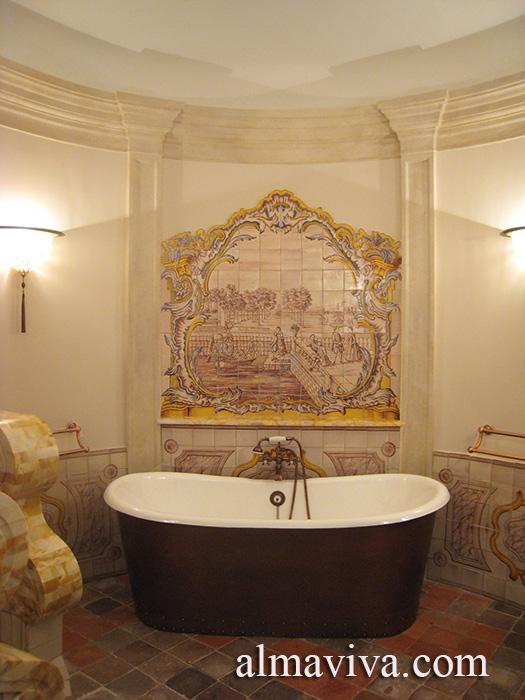
Bathroom in azulejos, project realized with Lafourcade cabinet in the tower of a Provencal castle
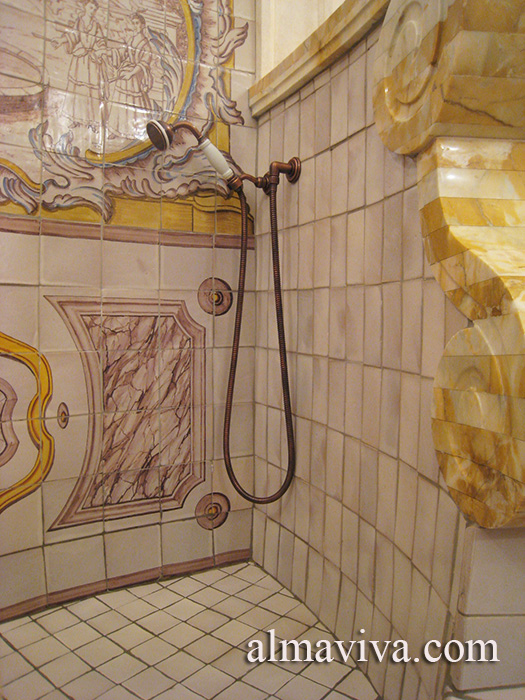
Detail of the azulejos shower made with the Lafourcade cabinet in the tower of a Provencal castle
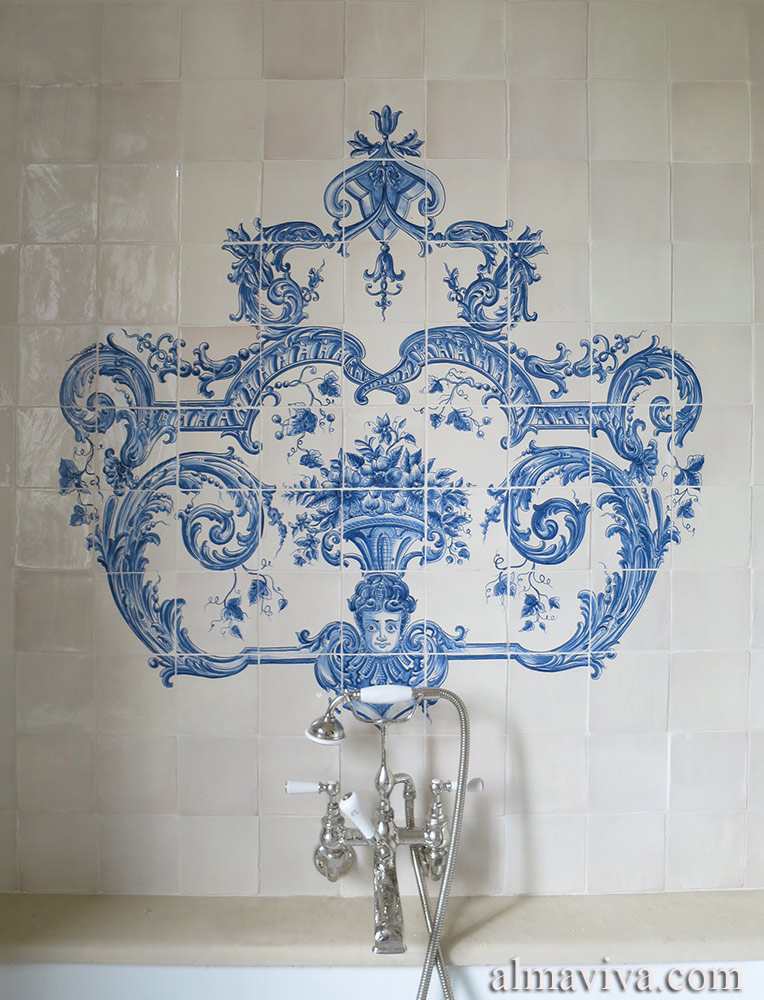
Ref. A21 - Our workshop created this bathroom decor in the azulejos style
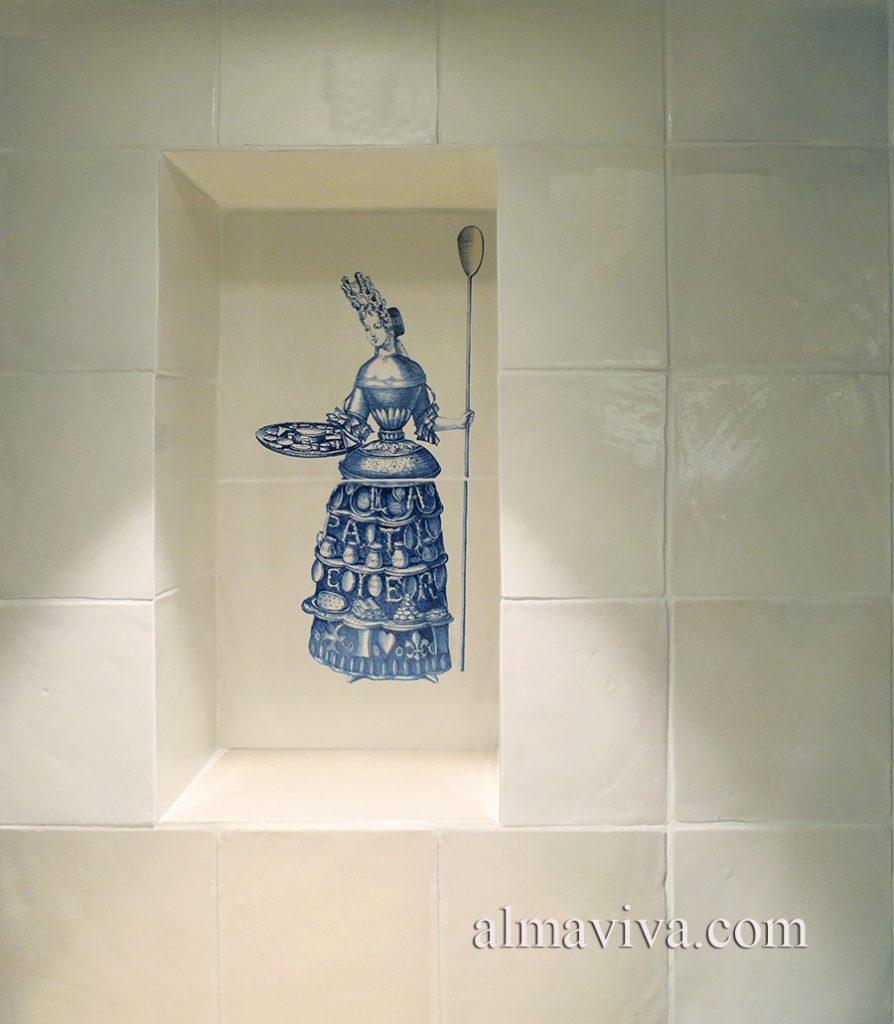
Ref. A22 - To decorate a tiled niche, reproduction of an engraving by Nicolas de Larmessin
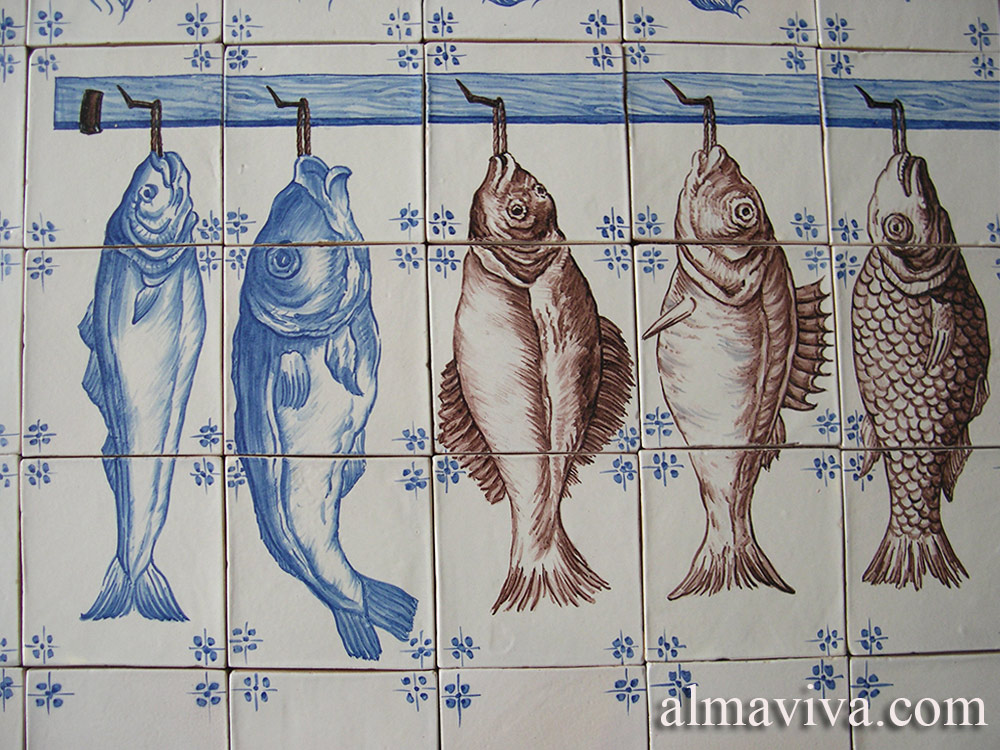
Ref. A24 - An example of trompe l'oeil: hanging fish
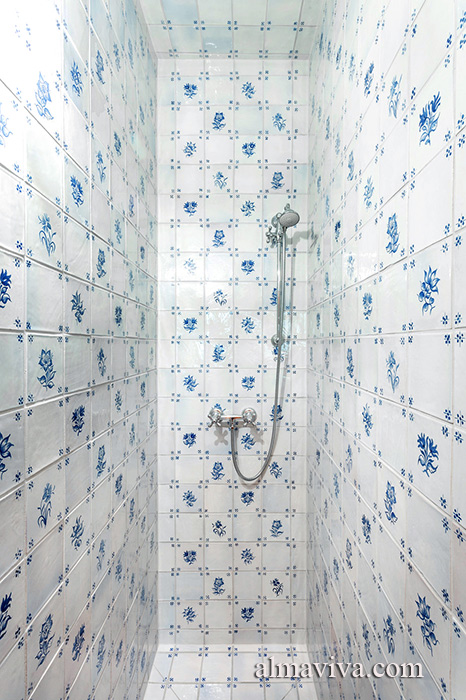
Ref. AC23 - Figura avulsa tiles with flower motifs for a shower. Project realized with the firm Aviolat-Chaperon-Escobar, architects in Friborg (Switzerland)
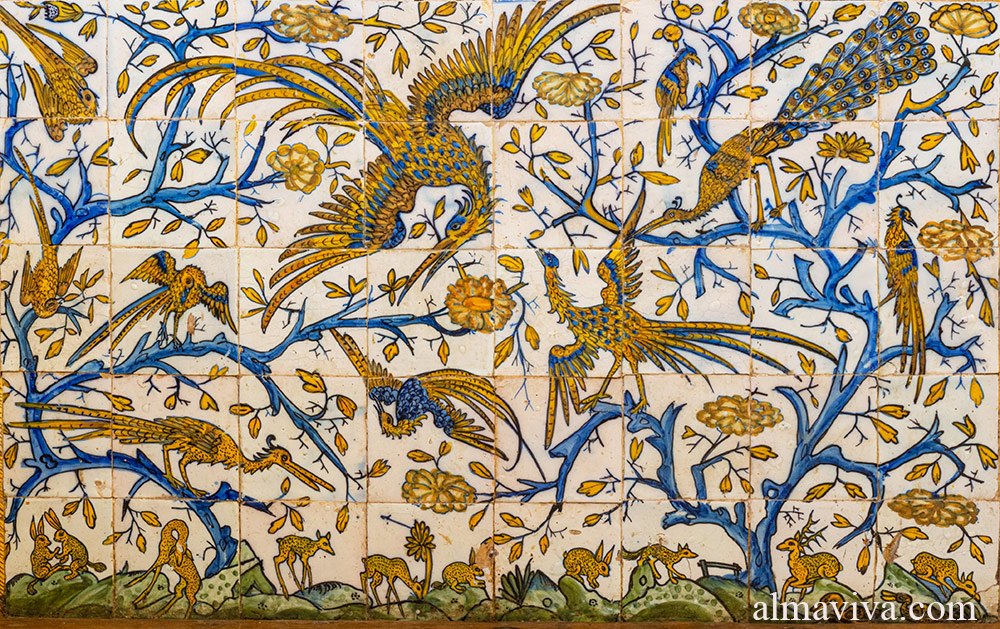
Ref. A19 - Detail of the azulejos of an altar at the Seminario de S. Paulo, Almada, Portugal (18th century)
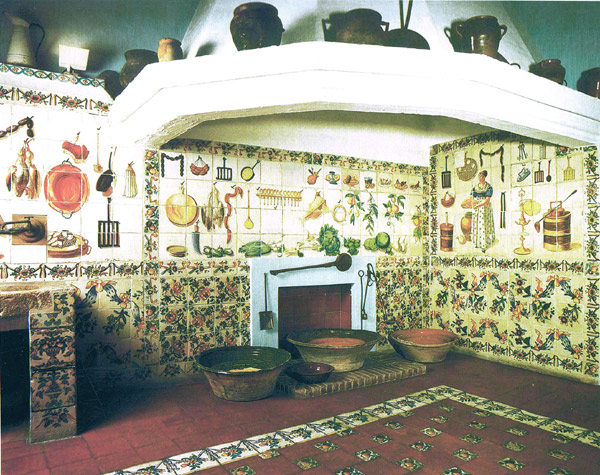
Ref. CD06 - Valencian kitchen. Montortal Palace, Spain, 17th c., with trompe l’œil decors
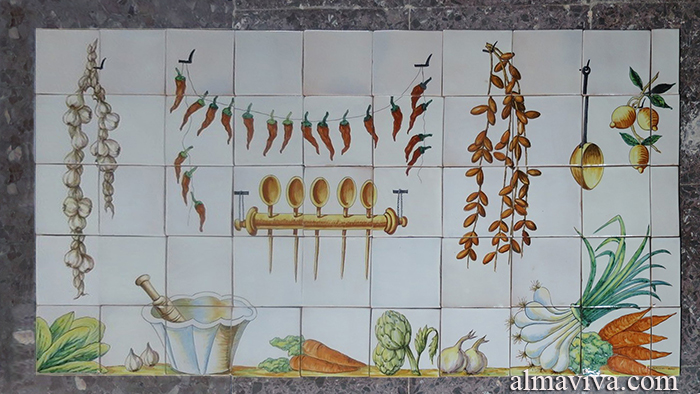
Ref. CD06 - On the model of Valencian kitchens, realization of a trompe l’œil panel
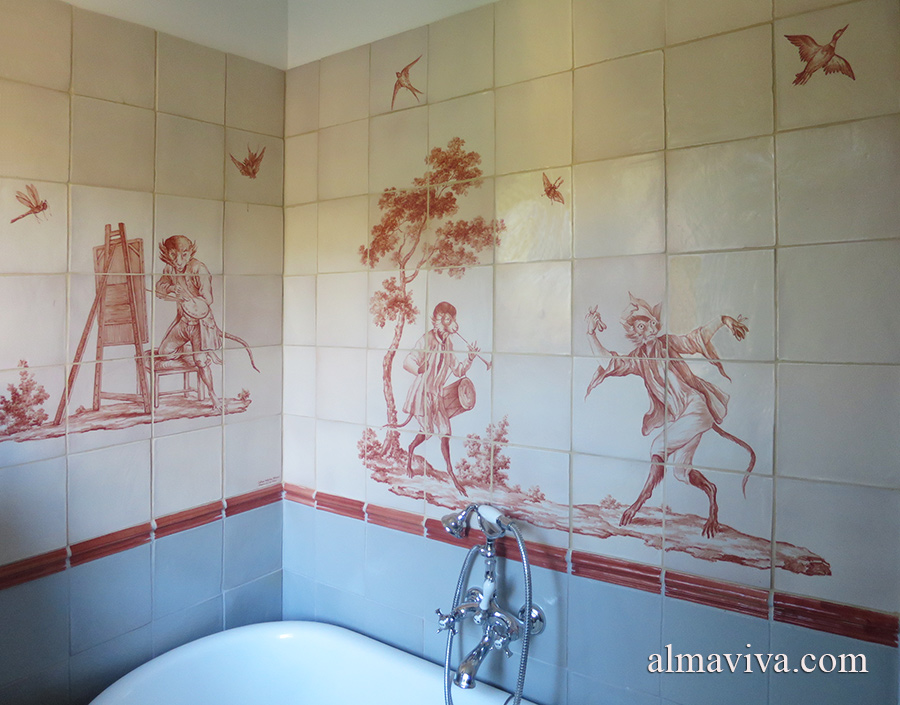
Ref. A08 - Bathroom decorated with a singerie inspired by Jean-Baptiste Huet painted in the manner of azulejos
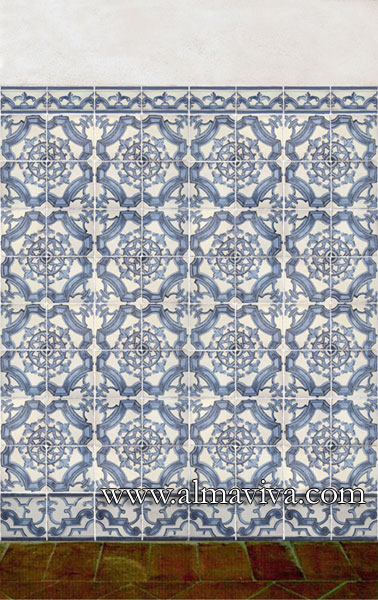
Ref. AC11 - Azulejos wall tiles ("wainscoting") 15x15 cm (about 6''x6'')
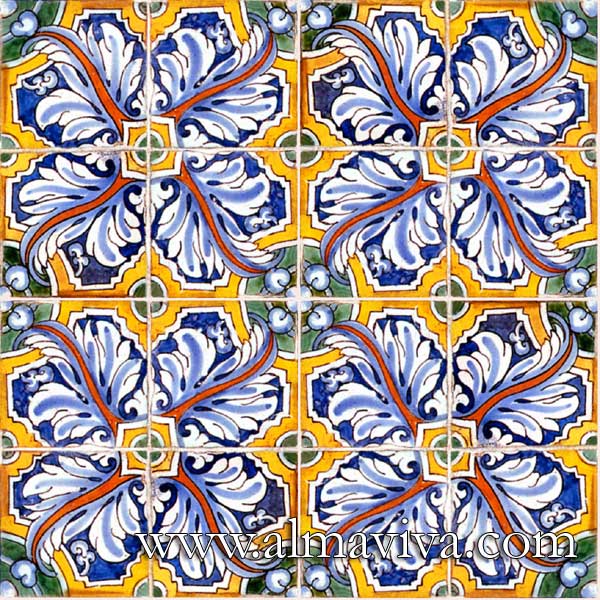
Ref. AC06 - Azulejos with scrolls of acanthus leaves, 15x15 cm tiles (about 6''x6'')
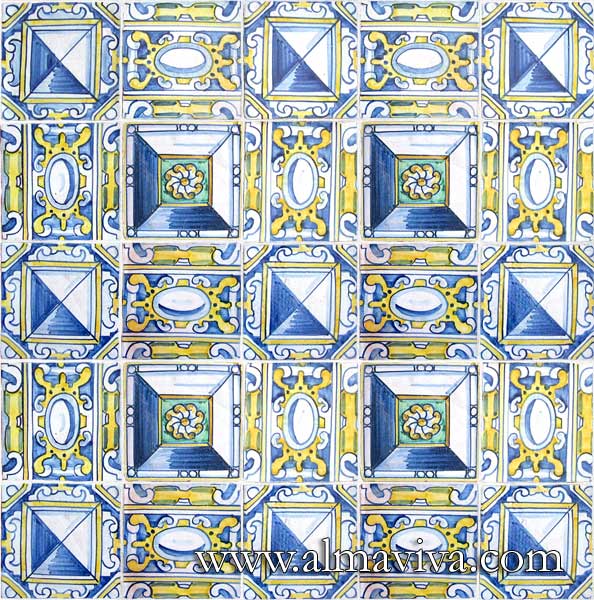
Ref. AC13 - Diamond Point. Tiles of 13x13 or 15x15 cm (about 5''x5'' or 6''x6''). Classic pattern of the Renaissance giving a relief effect.
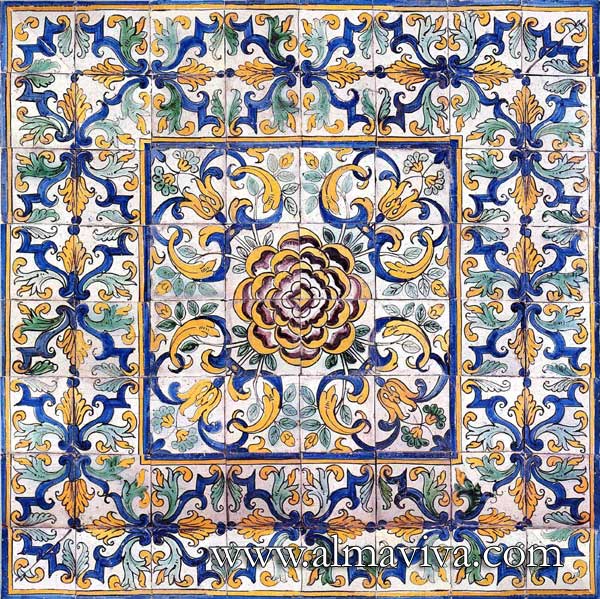
Ref. AC02 - Azulejo rose panel. Tiles 13x13 or 15x15 cm (about 5''x5'' or 6''x6'')
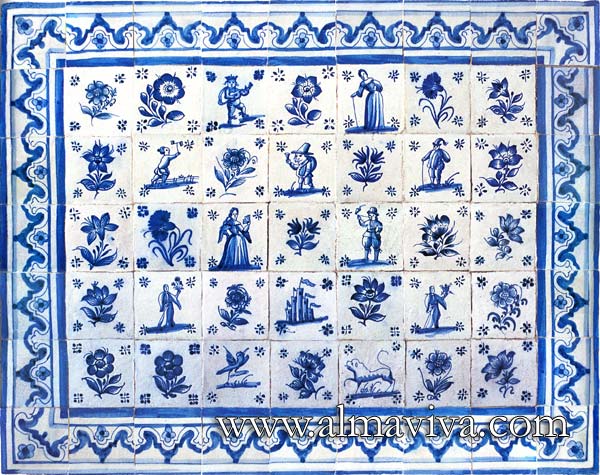
Ref. AC21 - Azulejos ''figura avulsa'' (see keywords): typical Portuguese production of the 17th-18th c. Tiles 13x13 or 15x15 cm (about 5''x5'' or 6''x6'')
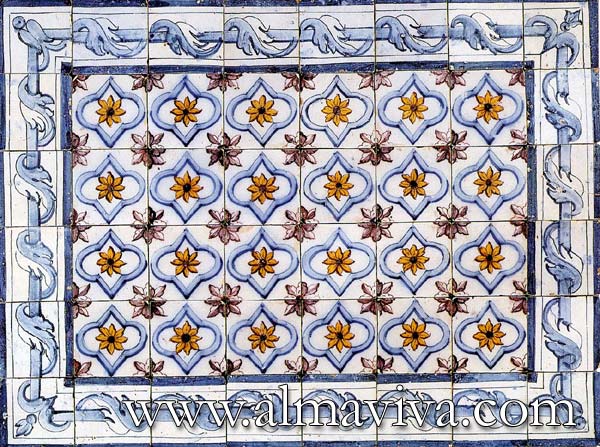
Ref. AC22 - Pombal Azulejo (see keywords): typical of Portuguese production of late 18th c. Tiles 13x13 or 15x15 cm (about 5''x5'' or 6''x6'')
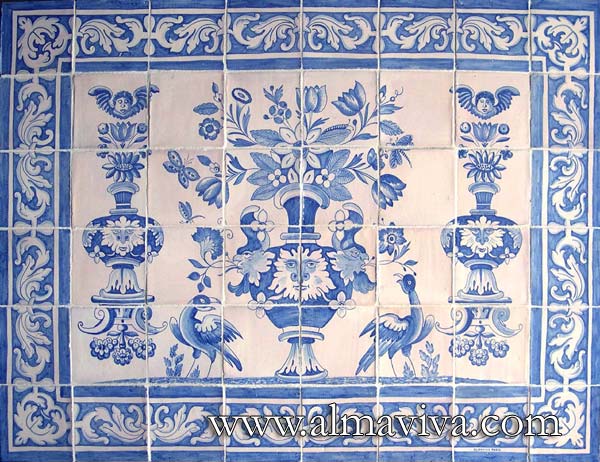
Ref. A23 - Albarrada azulejo with blue vase. Dim. 120x90 cm (about 47''x35'')
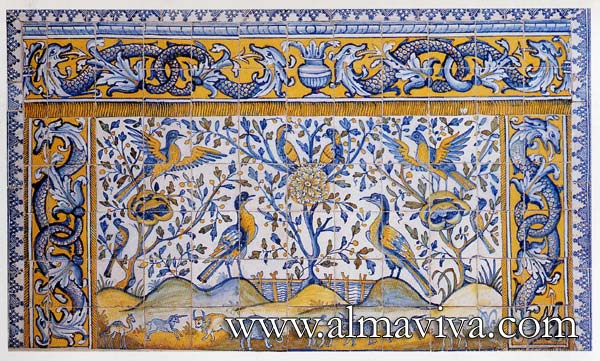
Ref. A28 - Oriental Azulejos (see keywords). Dim. 185x110 cm (about 73''x43''). Theses panels were used in Portugal to decorate the altar, they were imitation of fabrics from India
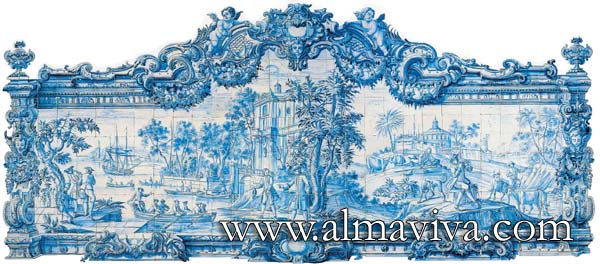
Ref. A65 - Azulejo mural with baroque frame. Dim. 4,65x2,10 m (about 15'x6,9'). The original of this panel is exhibited in the Madre Deus Convent, the Azulejos Museum in Lisbon
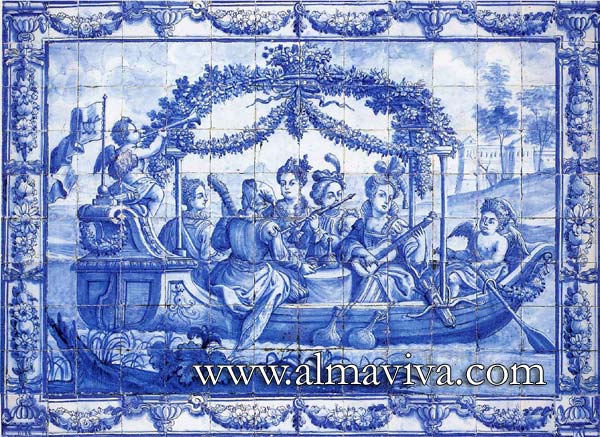
Ref. A16 - Mural with musicians. Dim. 2,2x1 m (about 7,2'x3,3')
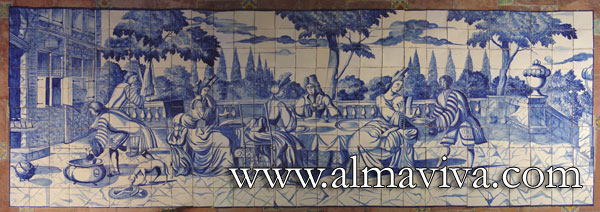
Ref. A56 - Large azulejo panel with meal scene. Dim. 4,2x1,5 m (about 14'x5'). Reproduction of panels painted by Dutch artisans for a Portuguese mansion. Some of the panels seen in Portugal were in fact painted in the Netherlands
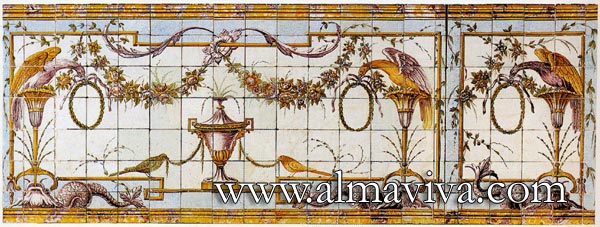
Ref. A45 - Neo-classical wall tiles. 13x13 or 15x15 cm (about 5''x5'' or 6''x6''). Production of the 1800's
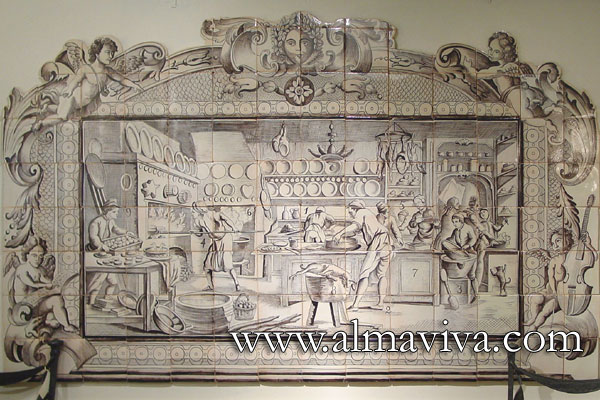
Ref. A10 - ''The French pastry''. 210x125 cm (about 6,9'x4,1'). Reproduction of an engraving from Diderot and d'Alembert Encyclopaedia (next image)
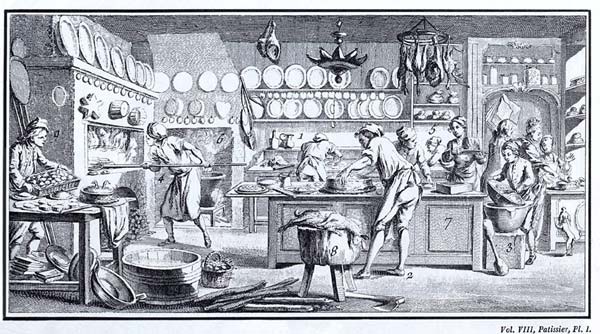
Ref. AG10 - Engraving ''The French Pastry'', circa 1750 from Diderot and d'Alembert Encyclopaedia, that inspired the previous panel
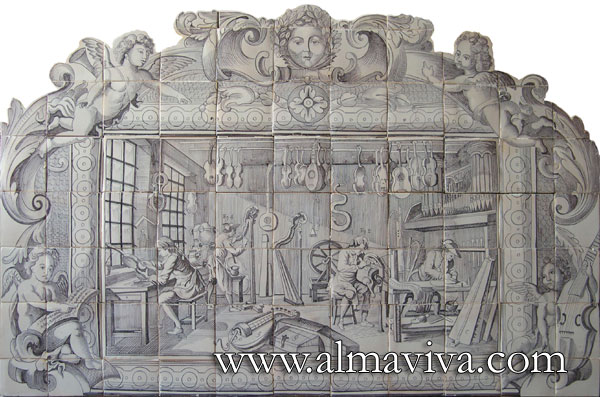
Ref. A11 - ''Instrument makers''. 165x105 cm (about 5,4'x3,4'). Reproduction of an engraging from Diderot and d'Alembert Encyclopaedia (see next image)
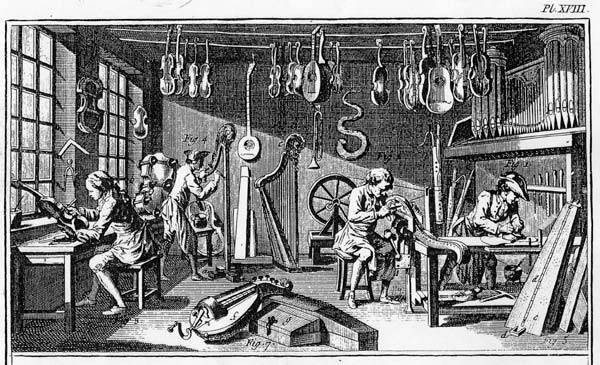
Ref. AG11 - Engraving ''Instrument makers'' workshop
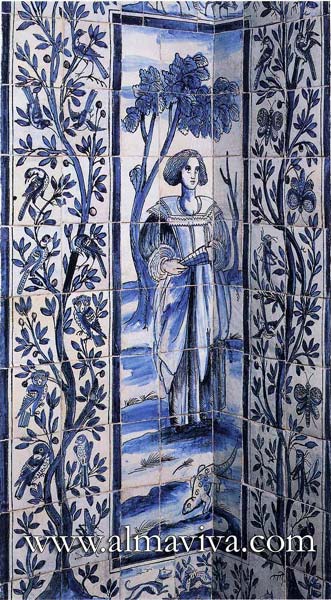
Ref. A12 - Oriental azulejos with life tree. Tiles 13x13 or 15x15 cm (about 5''x5'' or 6''x6''). Typical of the Portuguese production of the 16th c., influenced by the exchanges with the Orient
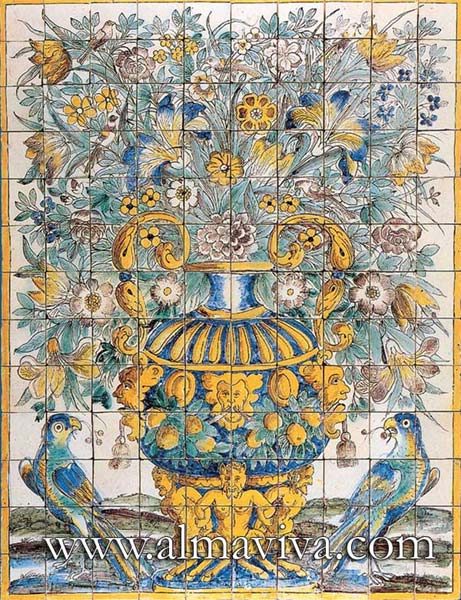
Ref. A02 - Polychrome Bouquet, model in the Azulejo Museum of Lisbon. Dim. 195x150 cm (about 6,4'x4,9'). The original of this panel is in the Azulejos Museum in Lisbon
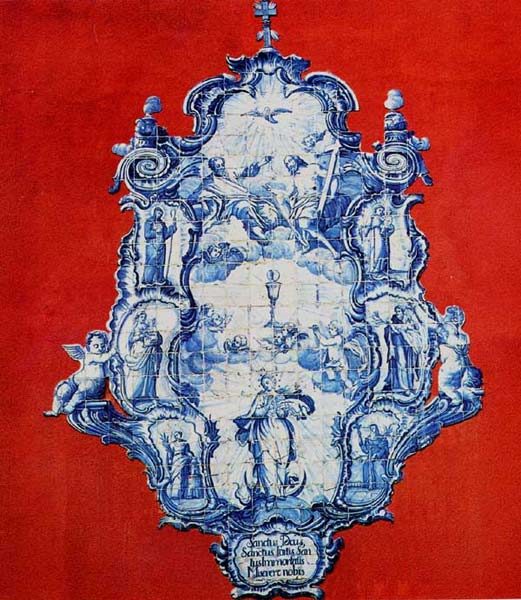
Ref. A07 - Votive plaque made of cut out tiles
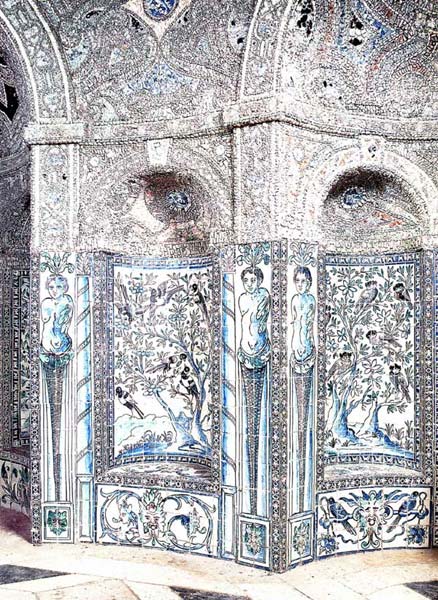
Ref. A26 - The gardens of the Palace of the Marquises of Fronteira in Lisbon are decorated with a phenomenal quantity of azulejos (see keywords)
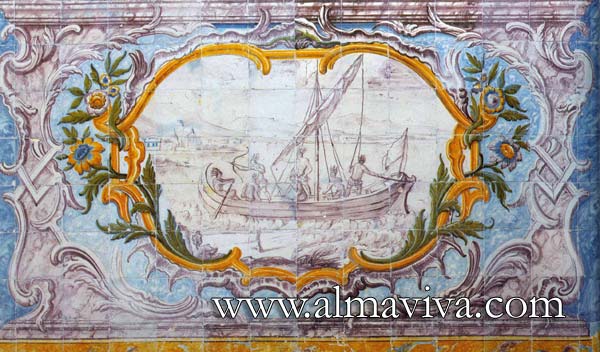
Ref. A35 - Wall tile Rocaille style. Dim. 1x2 m (about 3,3'x6,6')
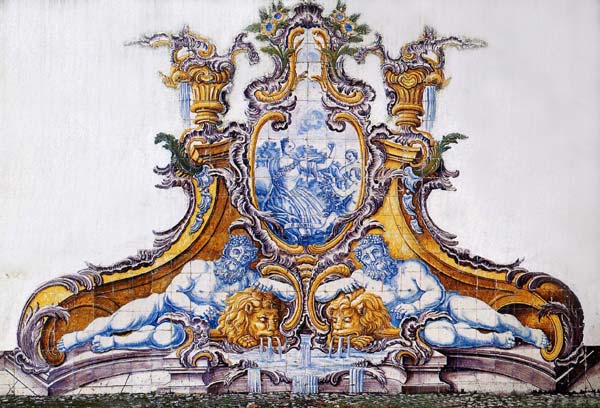
Ref. A42 - Fountain painted with trompe-l'oeil effect
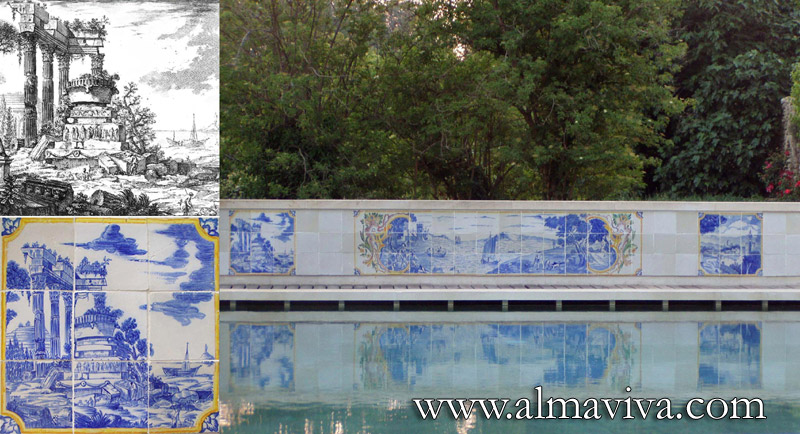
Ref. A33 - Swimming pool. The left azulejos panel (in the zoom) has been inspired by a Piranesi engraving (below). Non freezing tiles 22x22 cm (about 8,6''x8,6'')
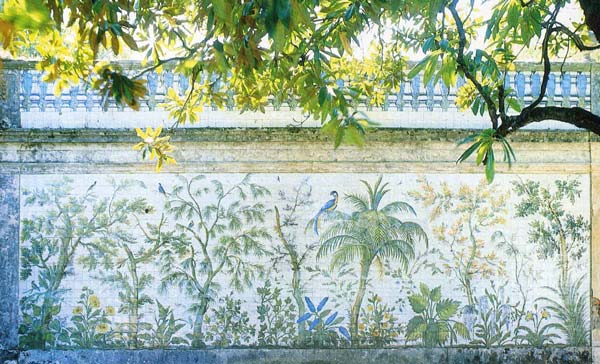
Ref. A57 - Tropical forest painted in trompe-l'oeil
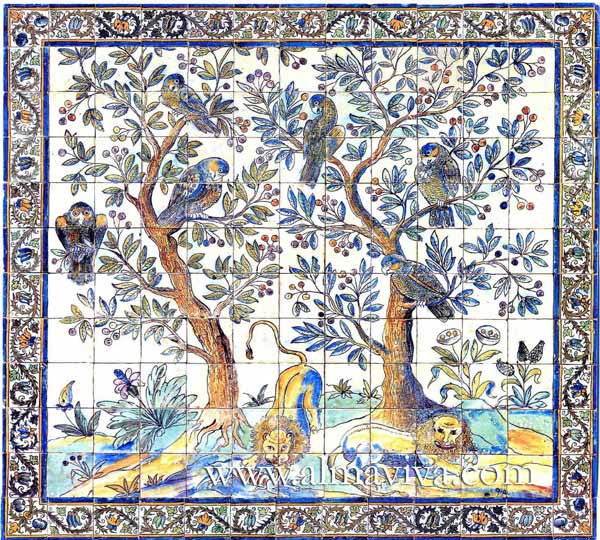
Ref. A51 - Lions panel. Dim. 180x195 cm (about 5,9'x6,4')
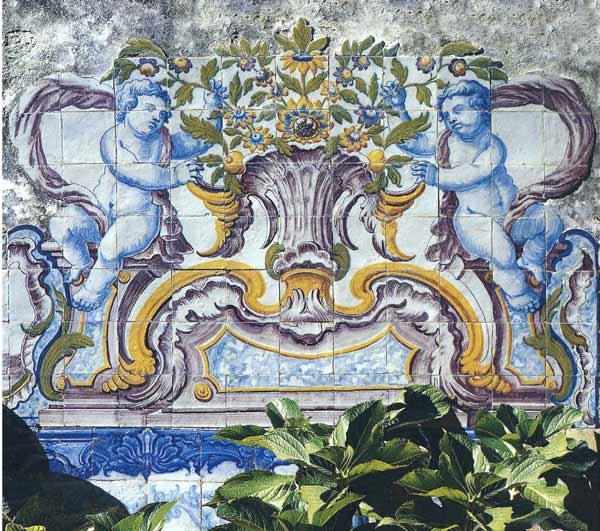
Ref. A61 - Garden with rococo azulejos
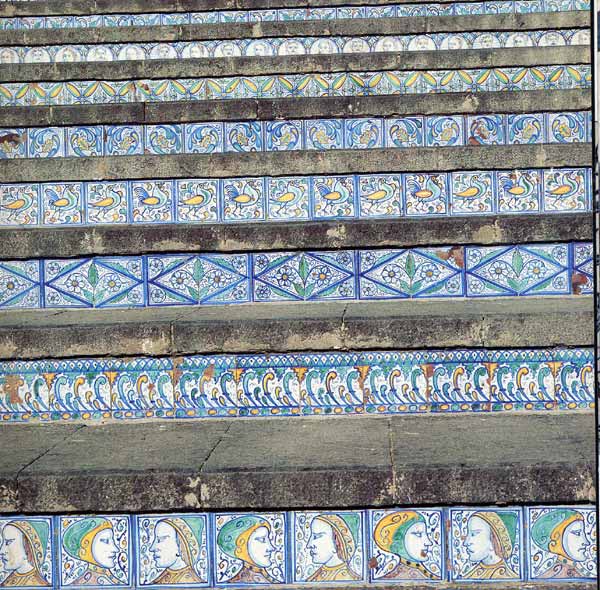
Ref. A04 - Stair risers, earthenware tiles
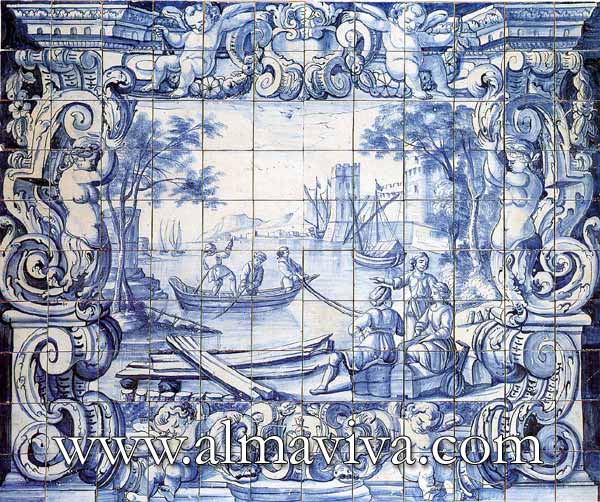
Ref. A31 - Azulejo with Maritime scene. Dim. 180x150 cm (about 5,9'x4,9')
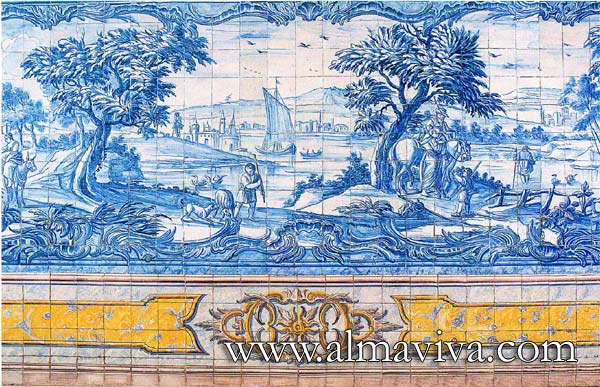
Ref. A29 - Landscape. Dim. 345x150 cm (about 11,3'x4,9')
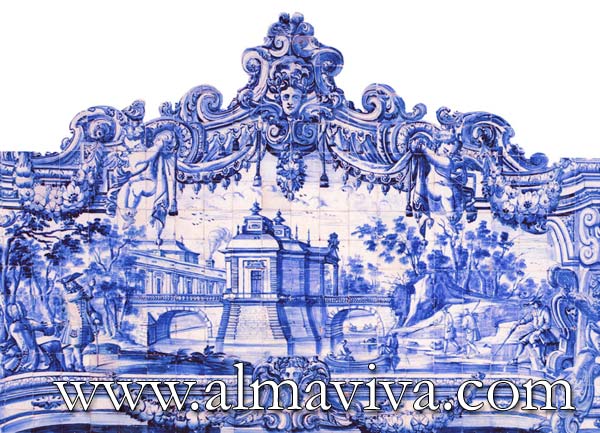
Ref. A54 - This azulejo panel is inspired by an engraving of Jean Lepautre (see next image)
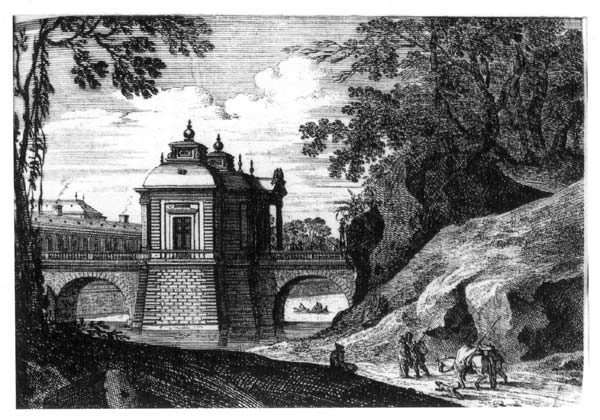
Ref. AG54 - Jean Lepautre (1618-1682), engraver : during the 18th c., his engravings have been reproduced very often on tiles panels (see previous image)
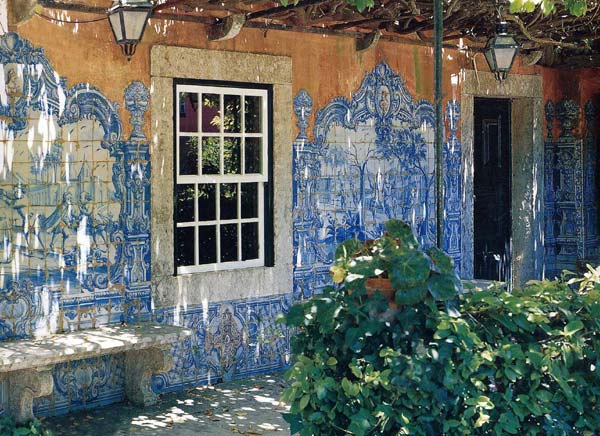
Ref. A30 - Pergola decorated with azulejo murals
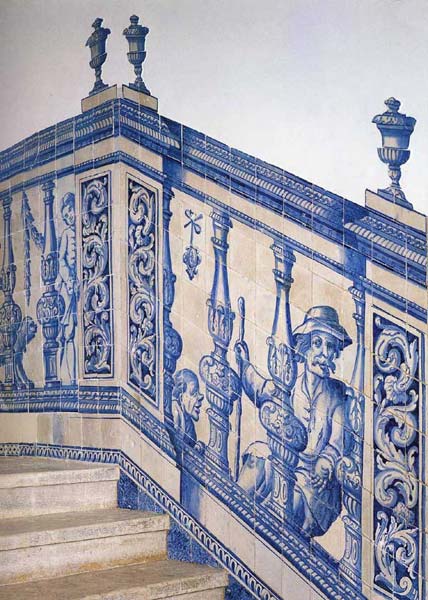
Ref. A49 - Stairway with a trompe-l'oeil balustrade painted on azulejos.
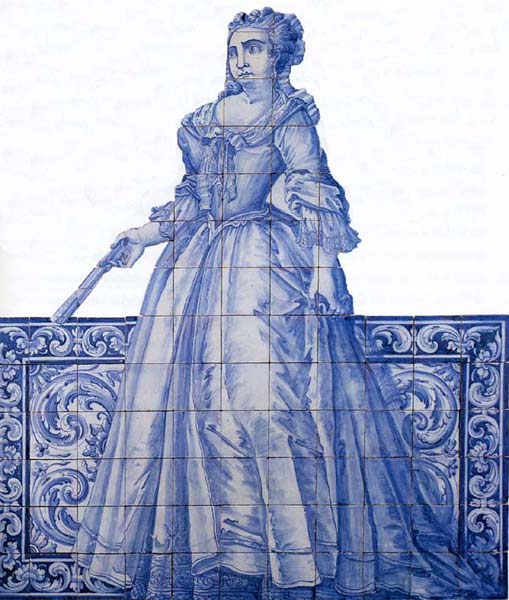
Ref. A14 - Woman with a fan. ''Figura de convite'' (see keywords), full-size figures (servants, soldiers, courtiers...). They were painted in staircases, vestibules and gardens of Portuguese Quintas, to welcome the visitors
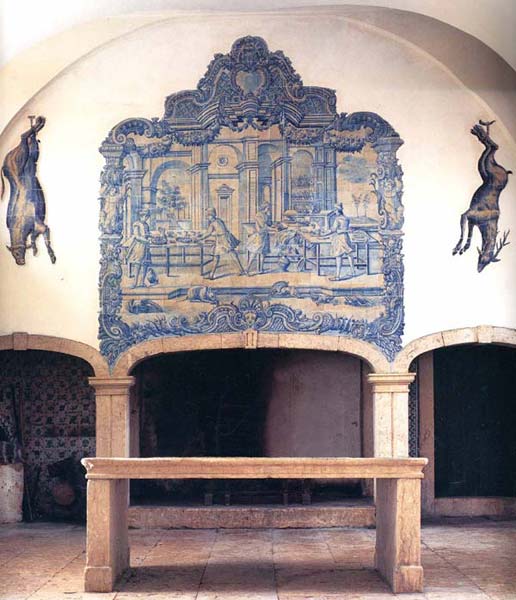
Ref. A27 - Kitchen with hunting trophy. Animals are painted on cut out tiles.
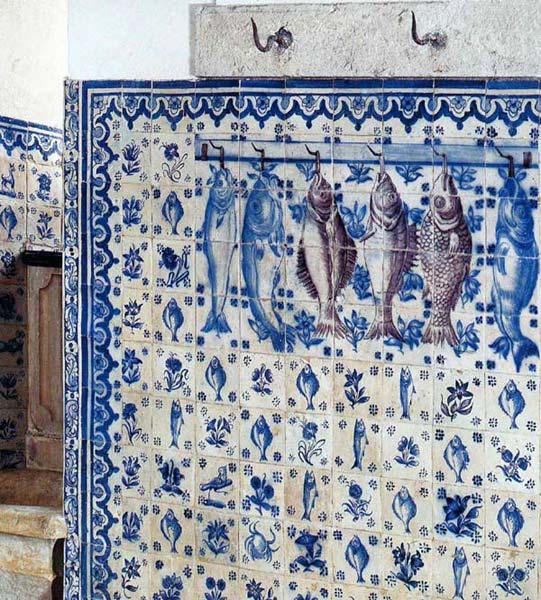
Ref. A09 - Fish in trompe-l'oeil, tiles 13x13 or 15x15 cm (about 5''x5'' or 6''x6'')
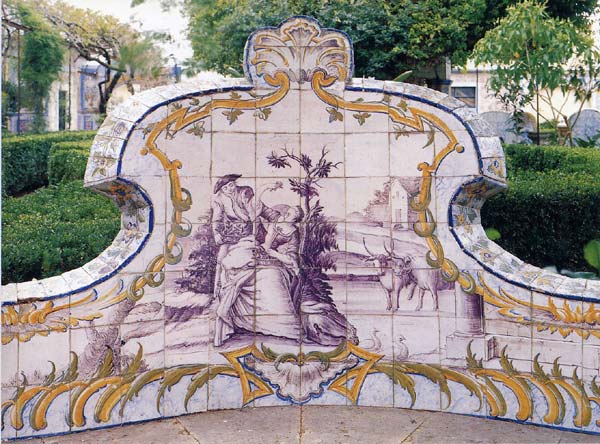
Ref. A66 - Garden bench covered with tiles.
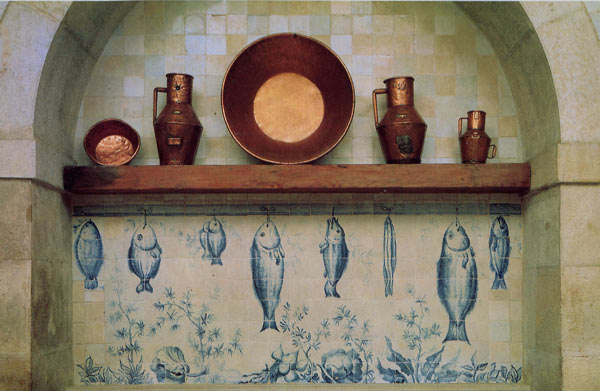
Ref. A55 - Kitchen backsplash wtih a trompe-l'oeil decor. Tiles 13x13 or 15x15 cm (about 5''x5'' or 6''x6'')
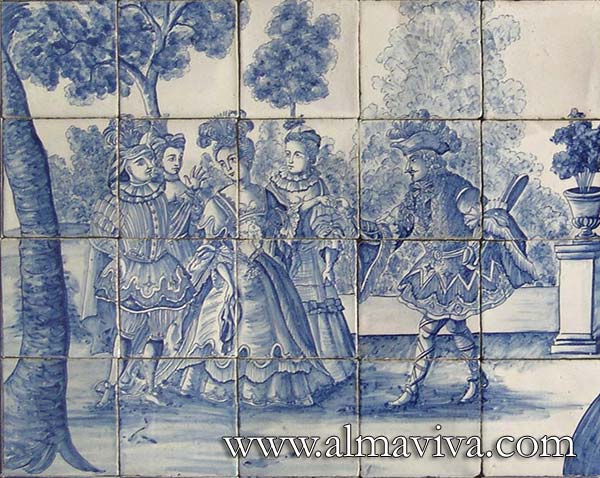
Ref. A70 - Dance scene. Detail of a larger panel. Tiles 13x13 or 15x15 cm (about 5''x5'' or 6''x6'')
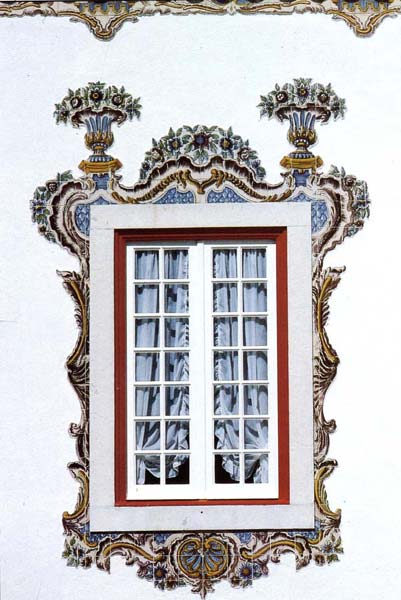
Ref. A05 - Window frame made with azulejo tiles
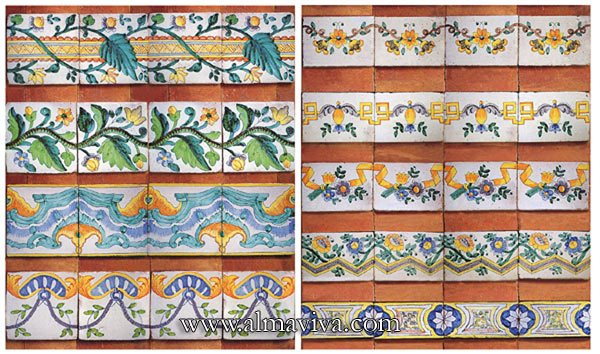
Ref. AC07 - Polychromatic friezes from the 18th c.
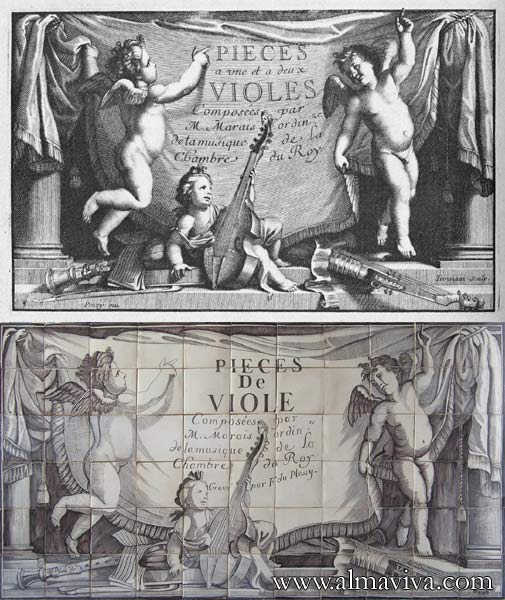
Ref. A20 - Music scene. Dim. 165x90 cm (about 5,4'x3'). Reproduction of a 17th c. engraving (Fr. du Plessy)
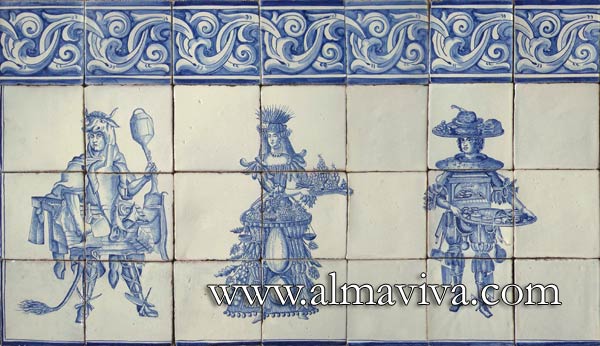
Ref. AC10 - 17th c. Characters of various trades inspired by engravings of Nicolas Larmessin. 15x15 cm tiles (about 6''x6''). Reproduction of engravings representing the costumes of professions. Here, the butcher, the fruiterer and the pastrycook
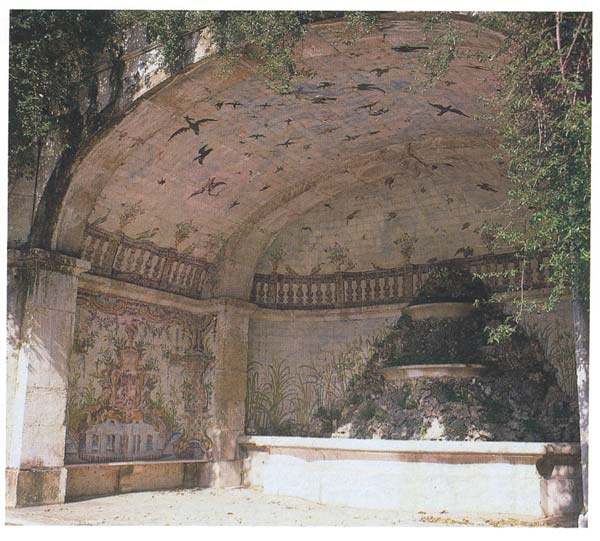
Ref. A22 - Nymphaeum in a garden in Lisbon. The vault is covered with tiles.
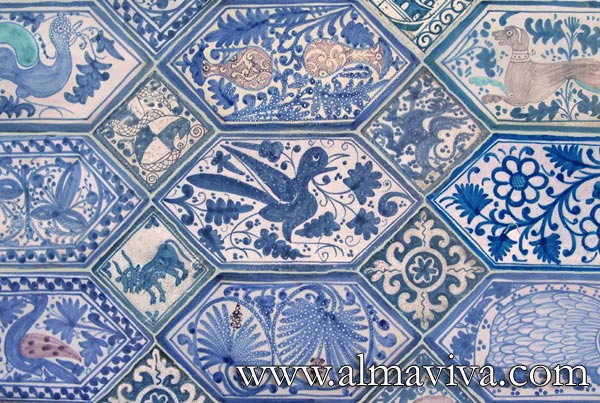
View Picture
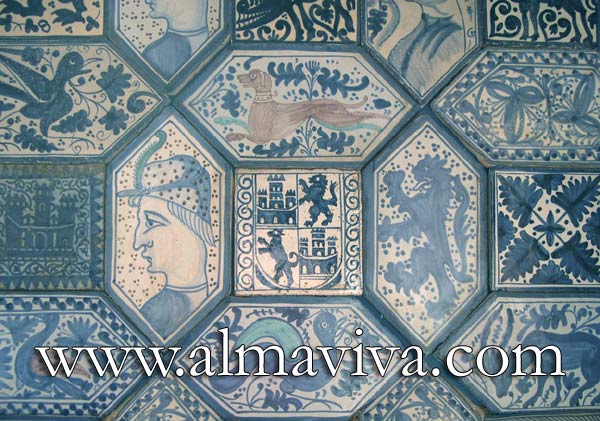
View Picture
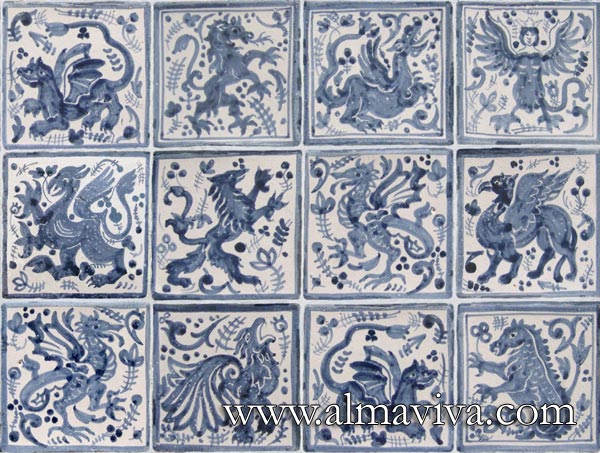
View Picture
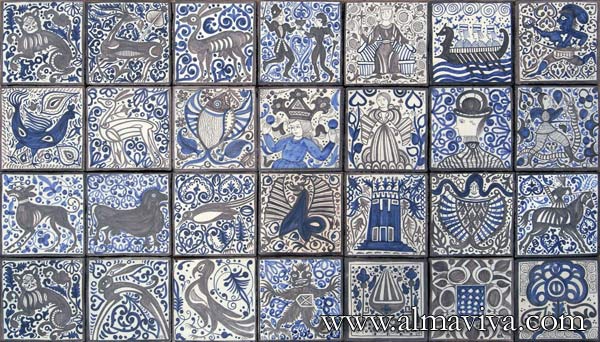
View Picture
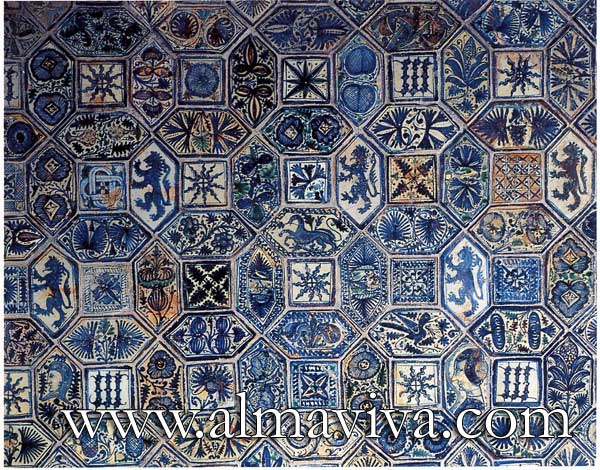
View Picture
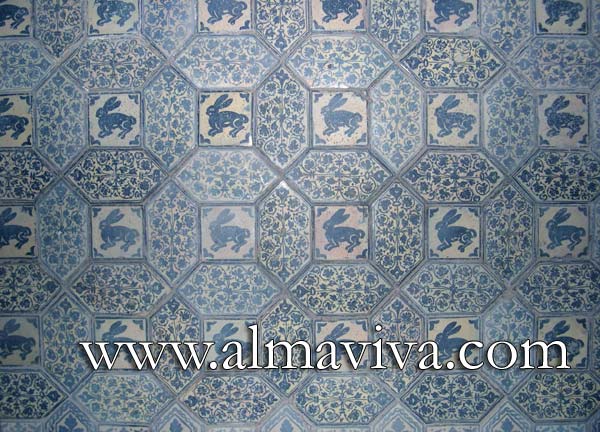
View Picture
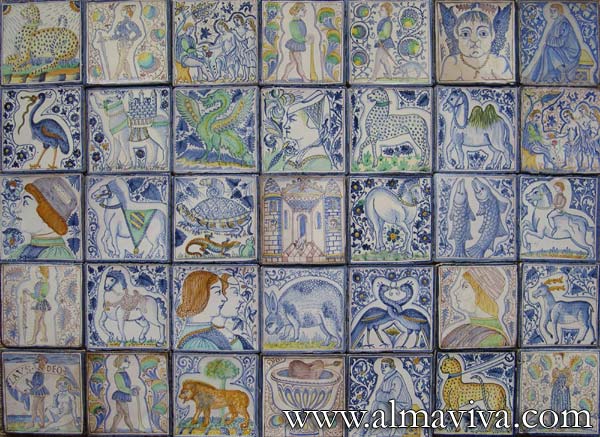
View Picture
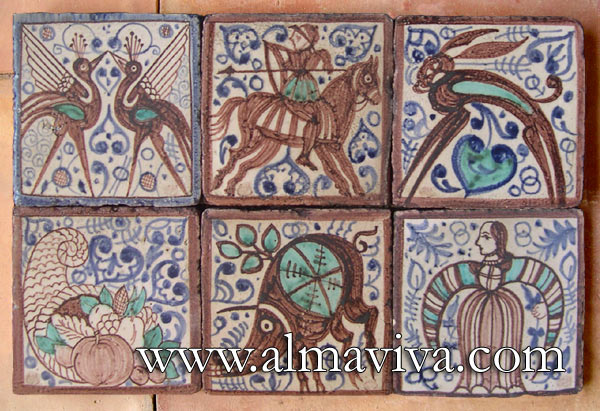
View Picture
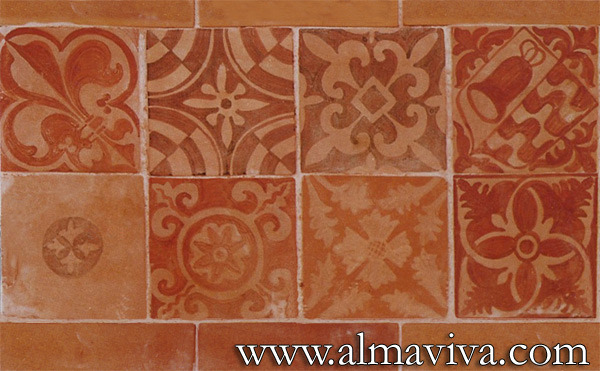
View Picture
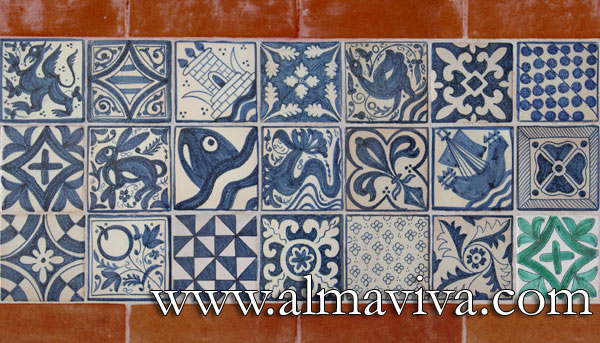
View Picture
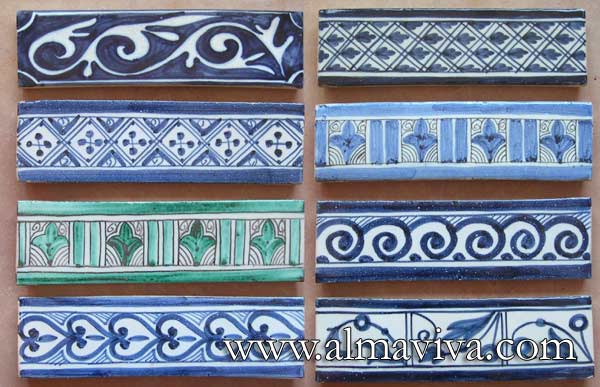
View Picture
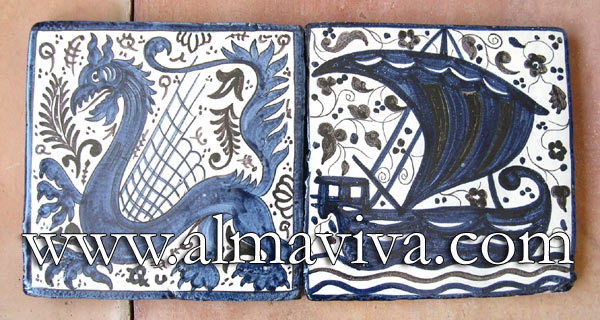
View Picture
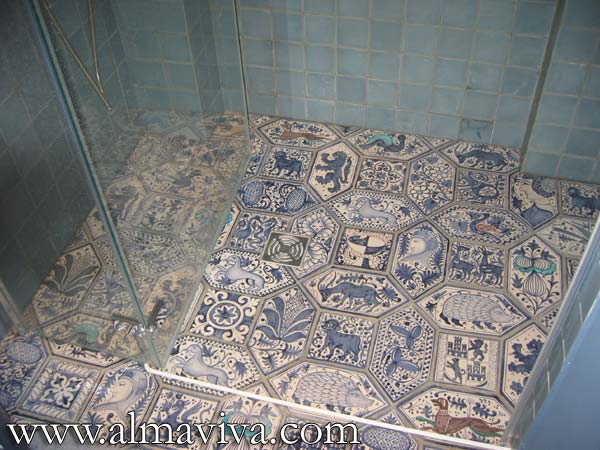
View Picture
INMA – Institut National des Métiers d’Art

Official website of the French Federation for craft profesionals. They publish the official directory of Arts and Crafts in France. Almaviva is a member.
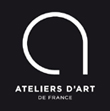
Official website of the French Federation for ceramic and glass craft profesionals. Almaviva is a member.

English version of the website of the “Ateliers d’Art de France”.

Non-commercial website presenting tile studios, mainly in the US.
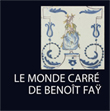
Vast collection of glazed tiles, mainly French, from the Middle-Ages to nowadays.
The word alicatado comes from the Arabic alcâ’ât which refers to patios. An alicatado is a composition of fragments of tiles of various sizes and coulours. This technique is close to mosaic. This technique was developed and much used in Al-Andalus (modern day Spain) under the Moors. Many examples of walls covered with Mudéjar alicatados can be admired in the Alhambra of Granada or in the chapel of San Bartolomé in Cordoba.
This art of ceramic is much related to the Morrocan zellige.
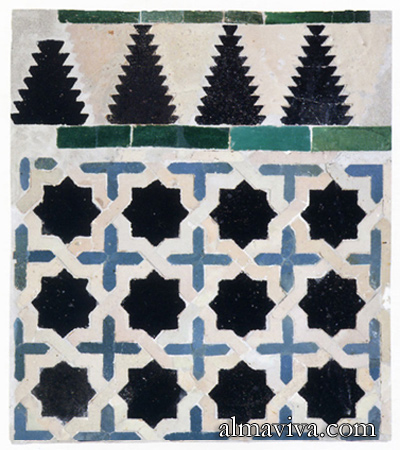
See examples of alicatados in our gallery of zellige.
Return to ceramic keywords.
Arista tiles are glazed ceramic tiles produced in Al-Andalus. The word arista means ridges in Spanish.
This Hispano-Moresque technique consists of stamping a tile of soft clay with a mould to create geometric patterns in relief. The ridges thus created form separate compartments which can be filled with coloured glazes.
This technique is close to cloisonné.
Examples of apothecary jars, ceramic tablewares and faiences.
View Picture
View Picture
View Picture
View Picture
View Picture
View Picture
View Picture
View Picture
View Picture
View Picture
View Picture
View Picture
View Picture
View Picture
View Picture
View Picture
View Picture
View Picture
View Picture
View Picture
View Picture
View Picture
View Picture
View Picture
View Picture
View Picture
View Picture
View Picture
View Picture
View Picture
View Picture
View Picture
View Picture
View Picture
View Picture
View Picture
View Picture
View Picture
View Picture
View Picture
View Picture
View Picture
View Picture
View Picture
View Picture
View Picture
View Picture
View Picture
View Picture
View Picture
View Picture
View Picture
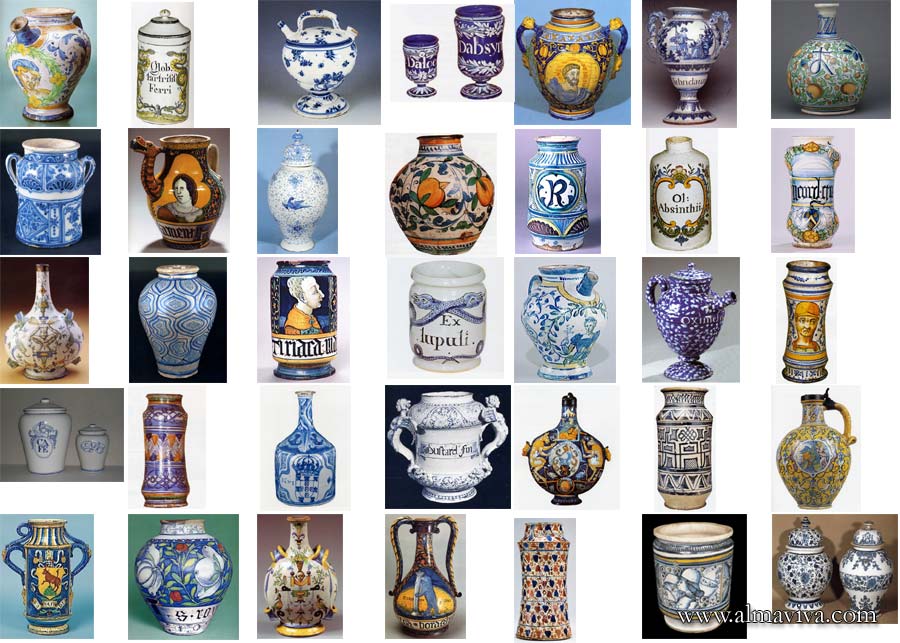
We have hundreds of images of apothicary jars in our archives that we use as source of inspiration. Here are some examples of apothicary jars. All theses jars have been hand-thrown.
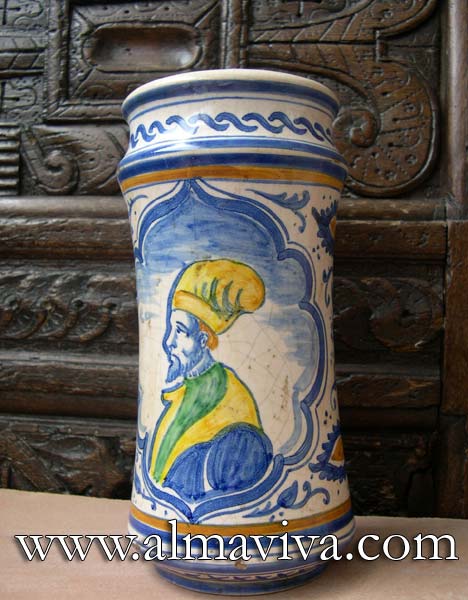
Ref. POT9 - Albarello Antwerp. H 30 cm (about 11,8'')
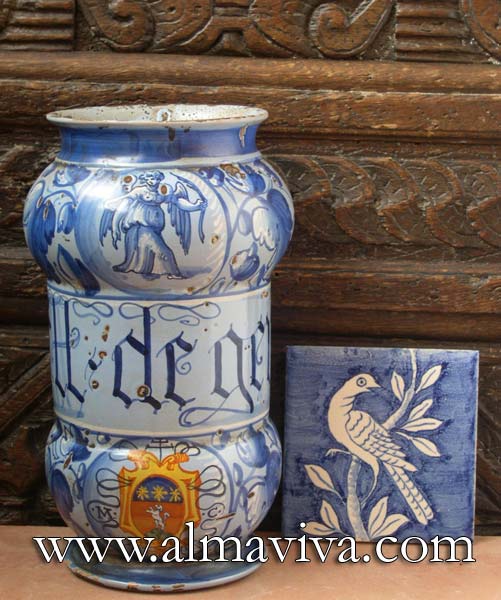
Ref. POT3 - Apothicary jar Venise. H 22 cm (about 8,6'')
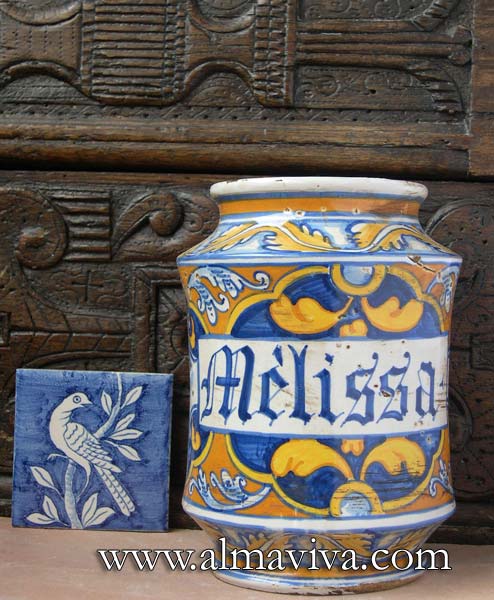
Ref. POT1 - Apothicary jar Faenza. H 22 cm (about 8,6'')
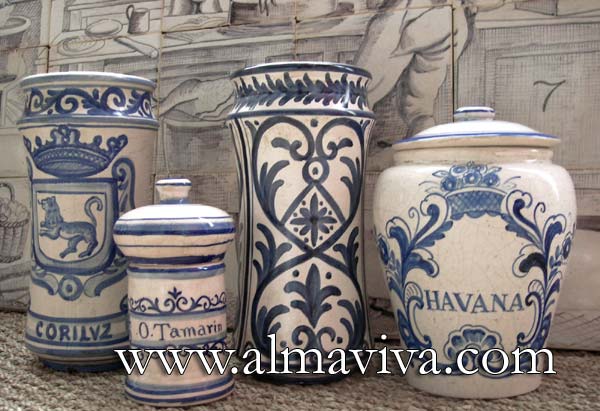
Ref. POT11 - Various apothicary jars
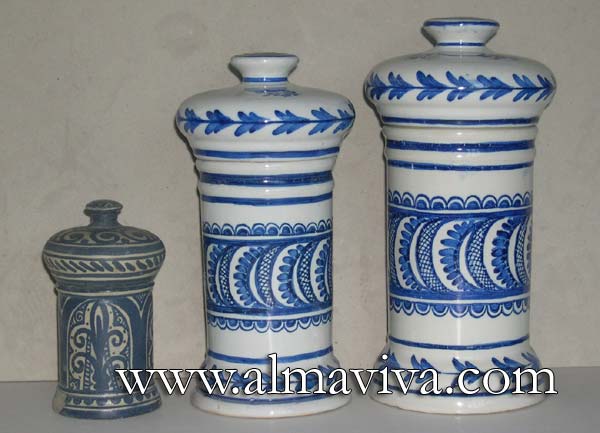
Ref. POT7 - Jars with lids. H 15, 23 et 25 cm (about 6'', 9'' and 9,8'')
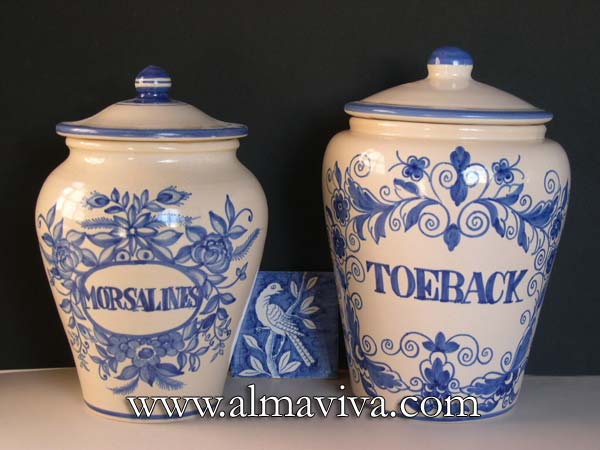
Ref. POT2 - Tobacco jars. H 28 et 30 cm (about 11
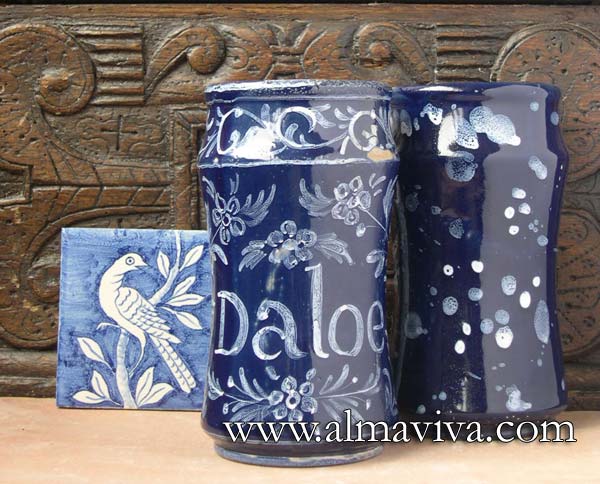
Ref. POT4 - Apothicary jars Nevers, décor made with a candle. H 19 cm (about 7,5'')
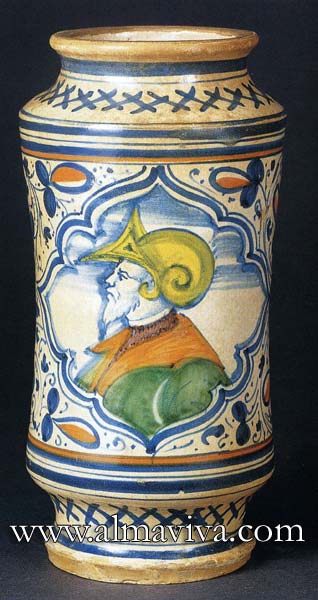
Ref. POT10 - Albarello Anvers. H 28 cm (about 11'')
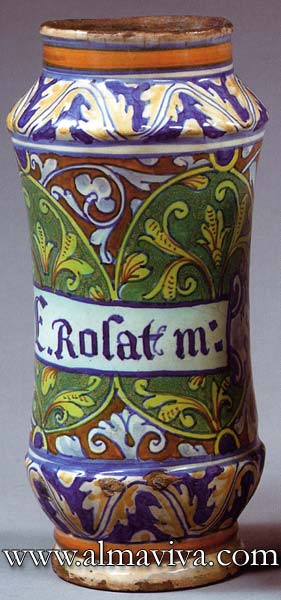
Ref. POT13 - Apothicary jar Nîmes. H 30 cm (about 11,8'')
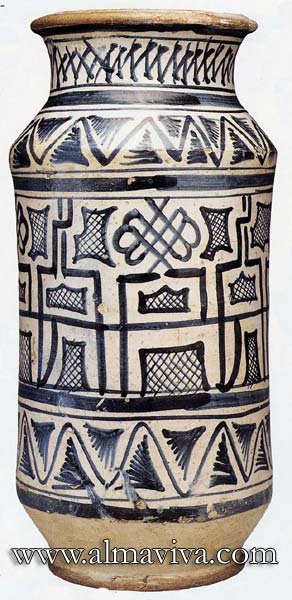
Ref. POT12 - Apothicary jar Montelupo. H 26 cm (about 10,2'')
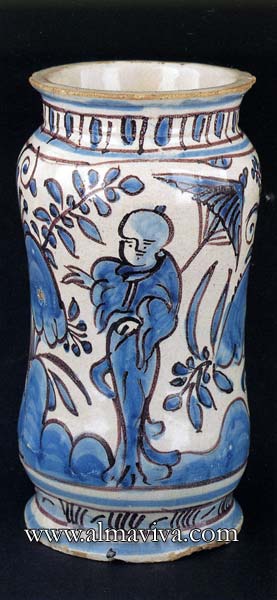
Ref. POT14 - Apothicary jar Portugal. H 24 cm (about 9,4'')
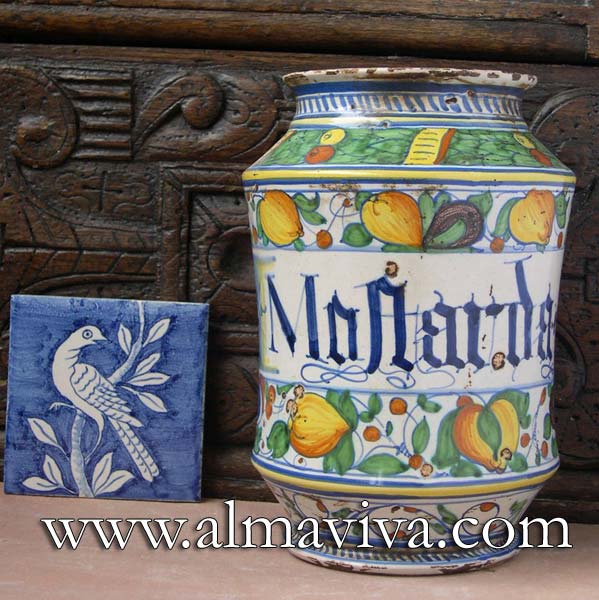
Ref. POT6 - Apothicary jar Urbino. H 22 cm (about 8,6'')
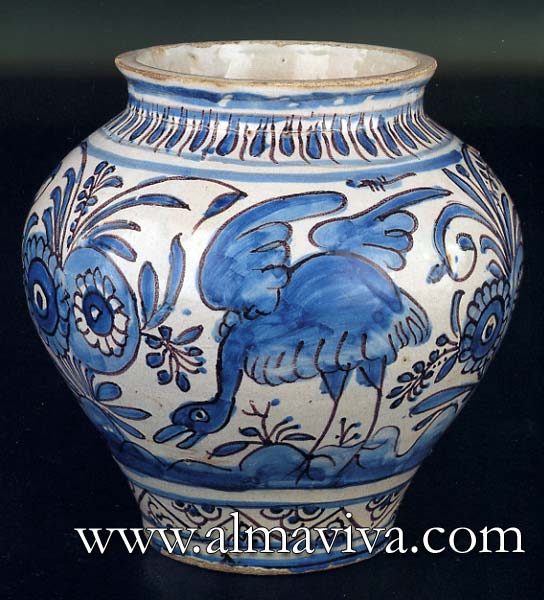
Ref. POT8 - Apothicary jar Portugal. H 23 cm (about 9'')
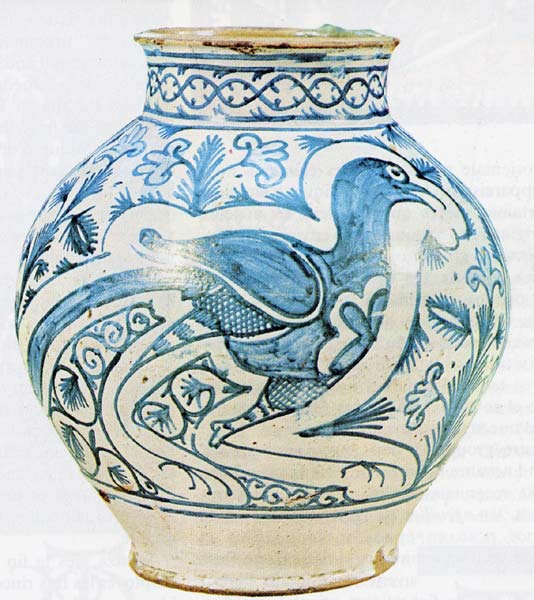
Ref. POT15 - Apothicary jar Toscane. H 26 cm (about 10,2'')
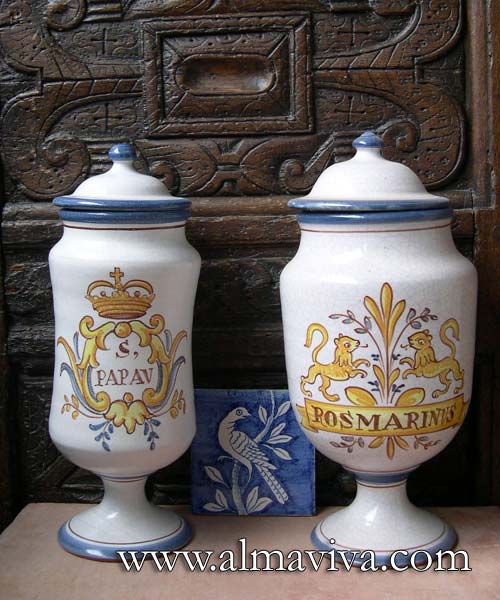
Ref. POT5 - Apothicary jars with a stem. H 32 cm (about 12,6'')
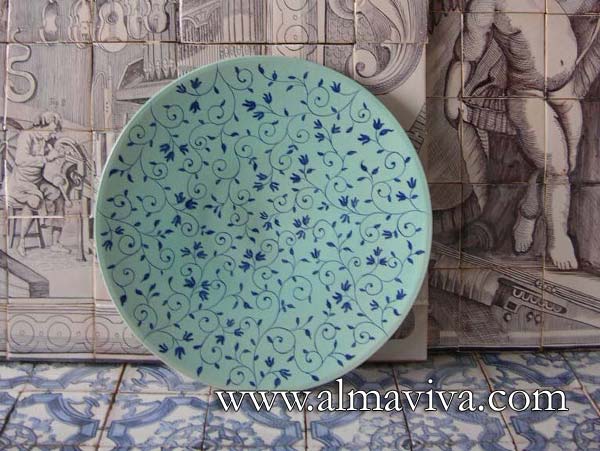
Ref. 56 - Dish ''Celadon''. Diametre 56 cm (about 22'')
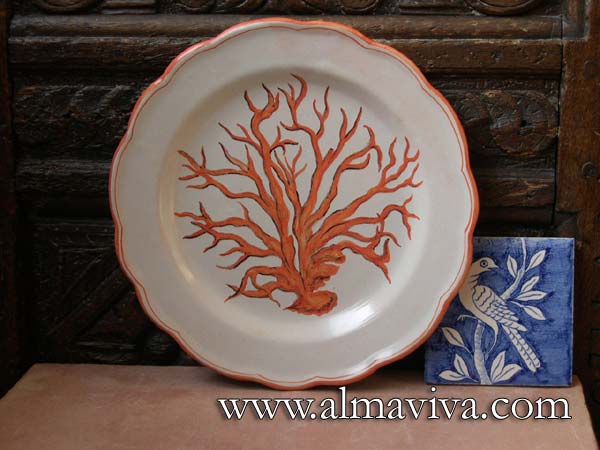
Ref. 113 - Plate ''Corail''
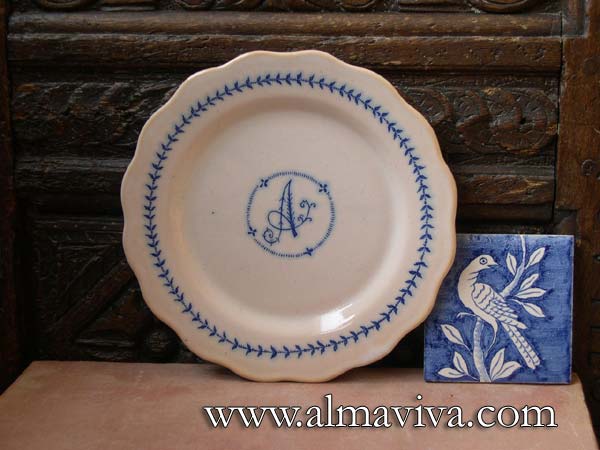
Ref. 115 - Plate with initials
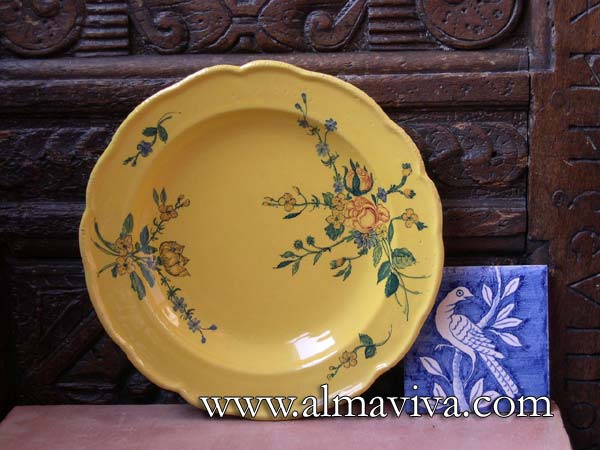
Ref. 117 - Plate Yellow glaze. Typical decor of Provence, diametre 25 cm (about 10'')
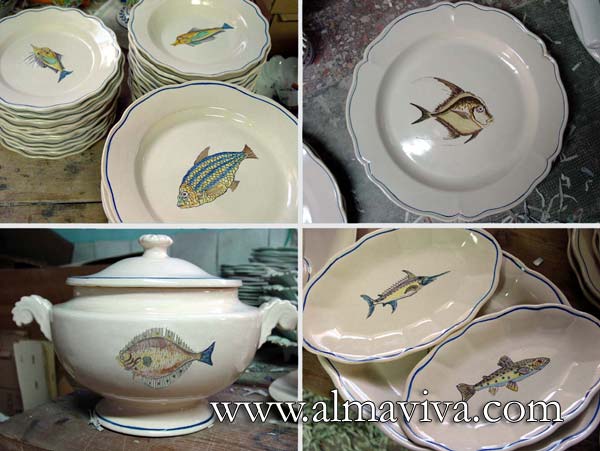
Ref. 120 - Dinner service ''Fish''
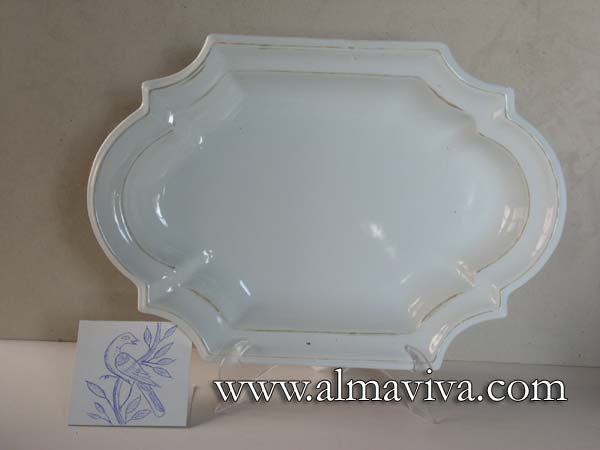
Ref. 682 - Dish - dim 41x28,5 cm (about 16''x11'')
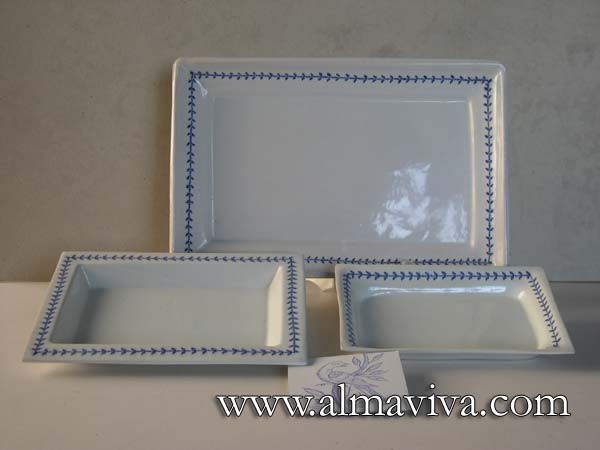
Ref. 805-2, 768-1 & -2 - Tray
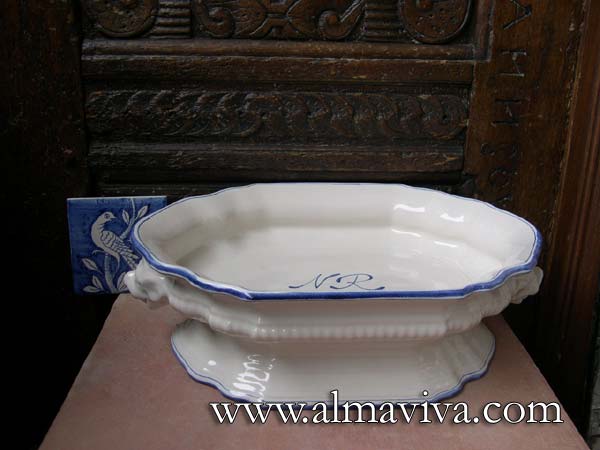
Ref. 211 - Table centre-piece - dim 38x27x12 cm (about 15''x10,6''x4,7''). Created for Nina Ricci
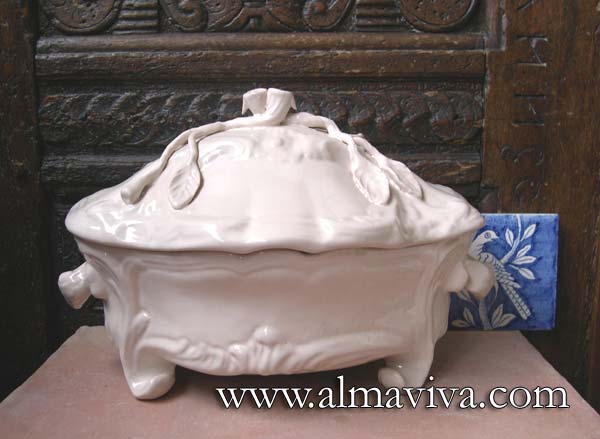
Ref. 228 - Jar for vegetables - dim 33x23x23 cm (about 13''x9''x9'')
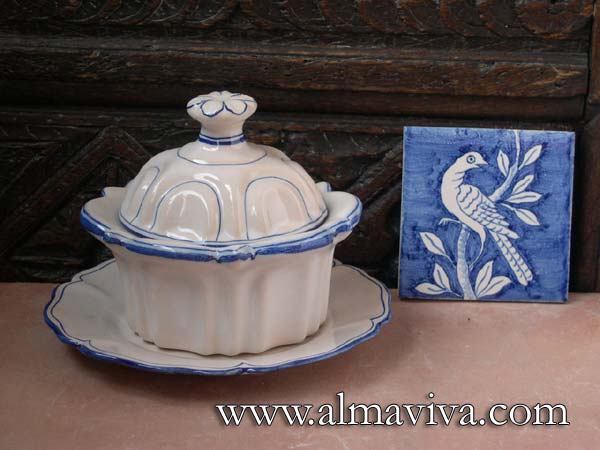
Ref. 651 - Jar for jam, bleue line
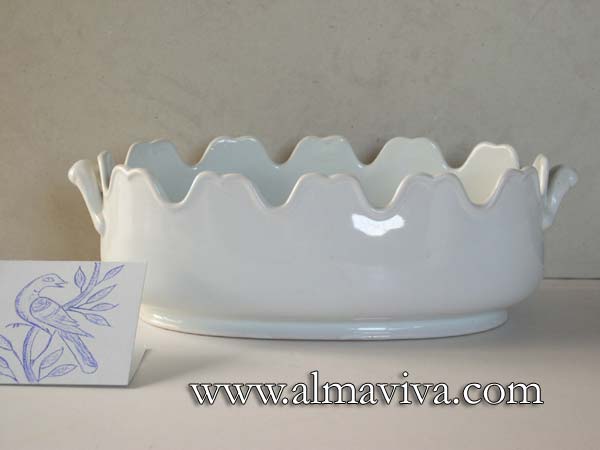
Ref. 772 - Rafraichissoir - dim 34x11 cm (about 13,4''x4,3'')
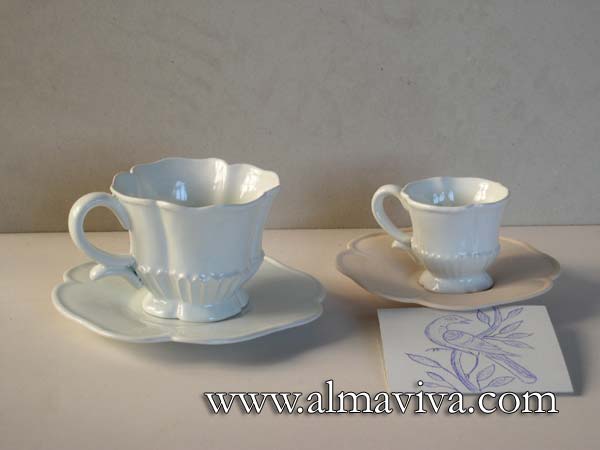
Ref. 847 & 820 - Cups - H 9 cm & 7 cm (about 3,5'' & 2,7'')
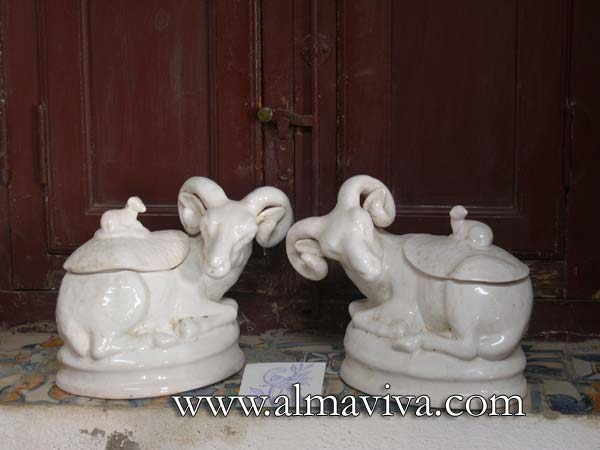
Ref. 130 - Terrines with animals - dim 29x20x23 cm (about 11,4''x8''x9''
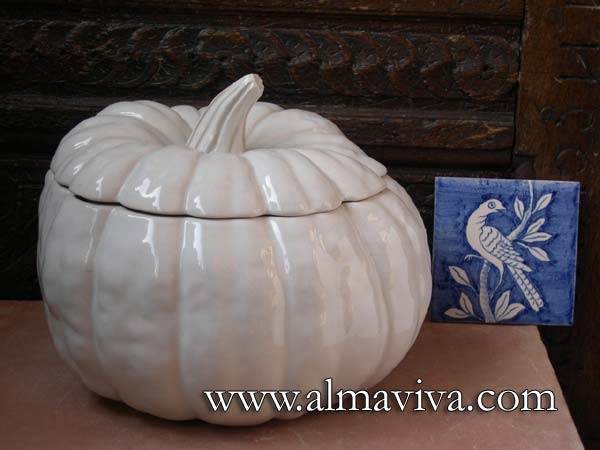
Ref. 799-1 - Terrine Pumpkin - H 20 cm (about 8'')
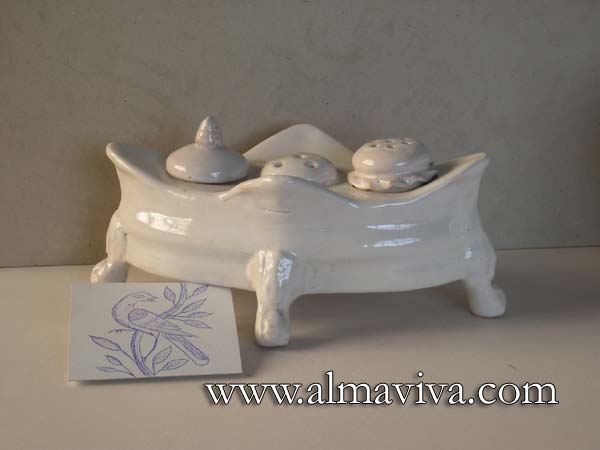
Ref. 665 - Inkwell
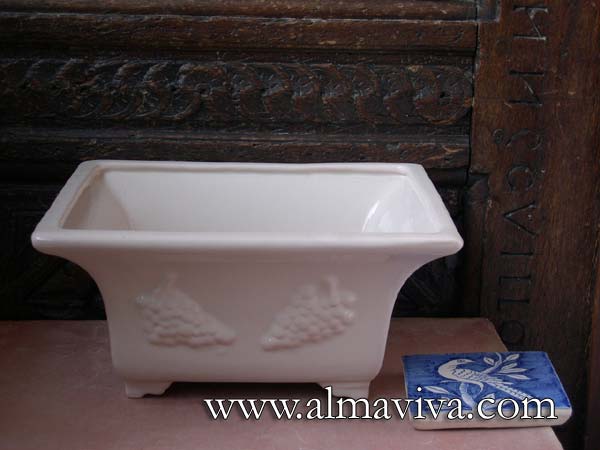
Ref. 247 - Garden pot - dim 27x13x22 cm (about 10,6''x5''x8,6'')
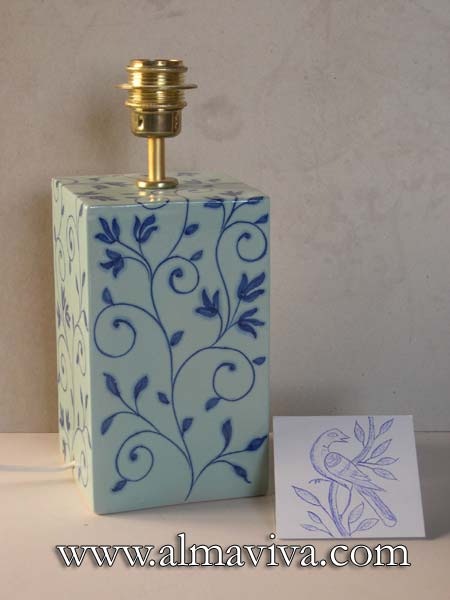
Ref. 190 - Lamp
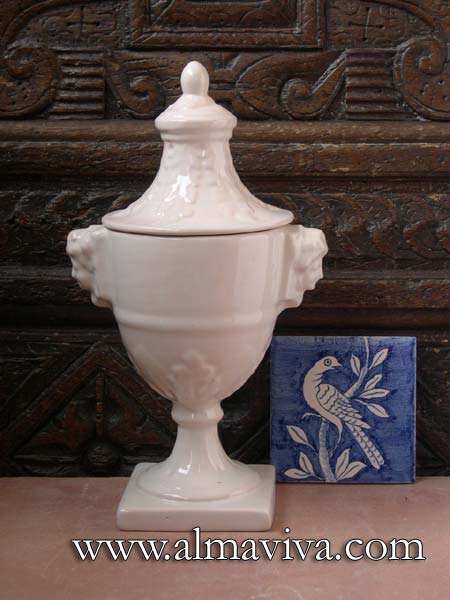
Ref. 248 - Cup - dim 30x16 cm (about 11,8''x6,3'')
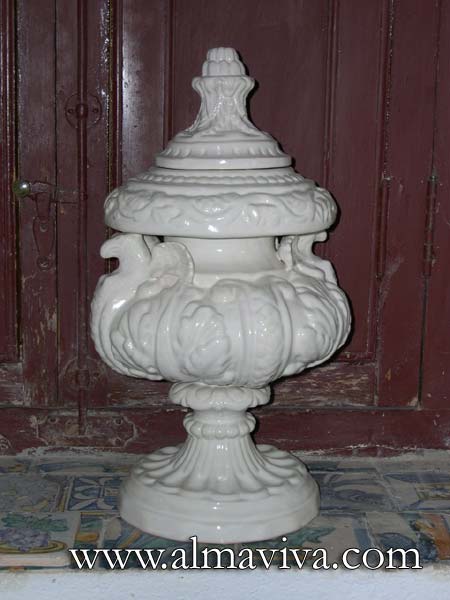
Ref. 402 - Urn - dim 48x27 cm (about 18,9''x10,6'')

Ref. 369 - Big Pot - dim 51x33 cm (about 20''x13''). Decor with heads
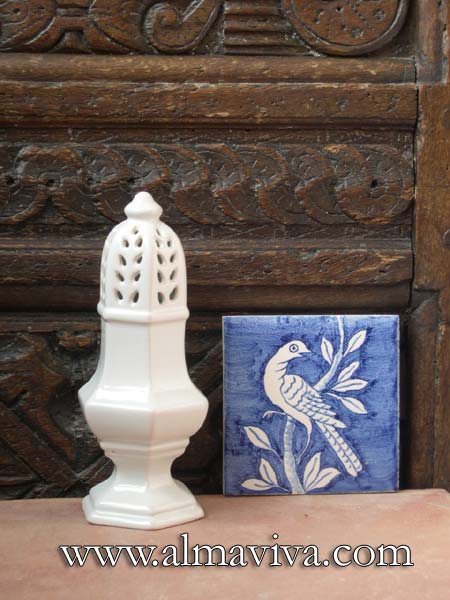
Ref. 786 - Sprinkler - H 18 cm (about 7'')
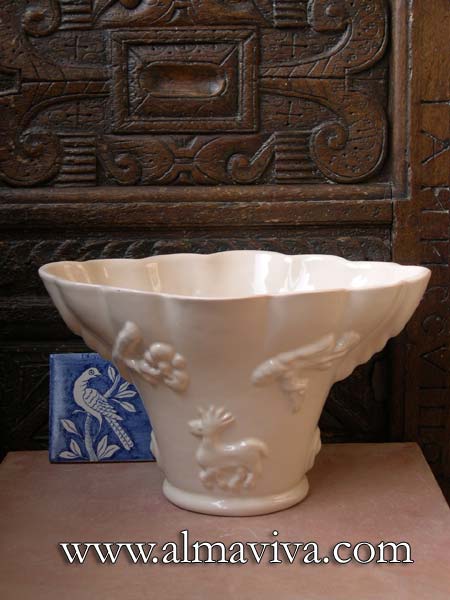
Ref. 212 - Dish for buddhist libation - diam. 32 cm (about 1')
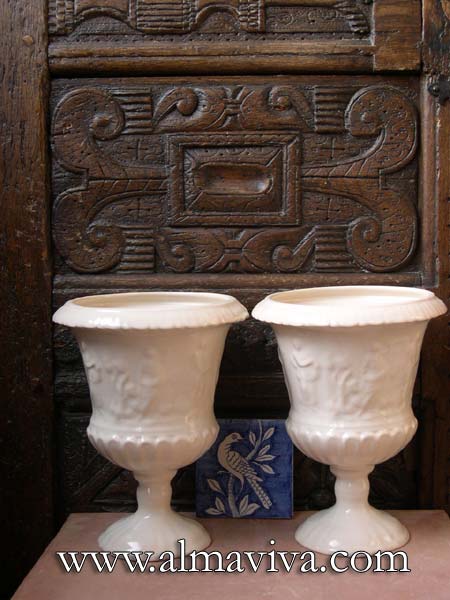
Ref. 200 - Glass with stem, neo-classical decor
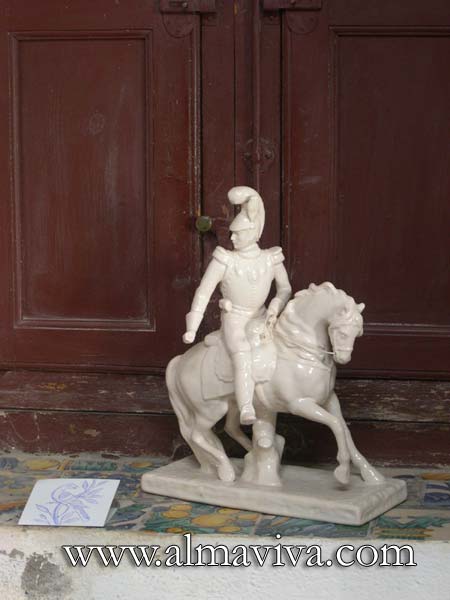
Ref. 154 - Lancer - H 29 cm (about 11,6'')

Ref. 639 - Big jar with lid
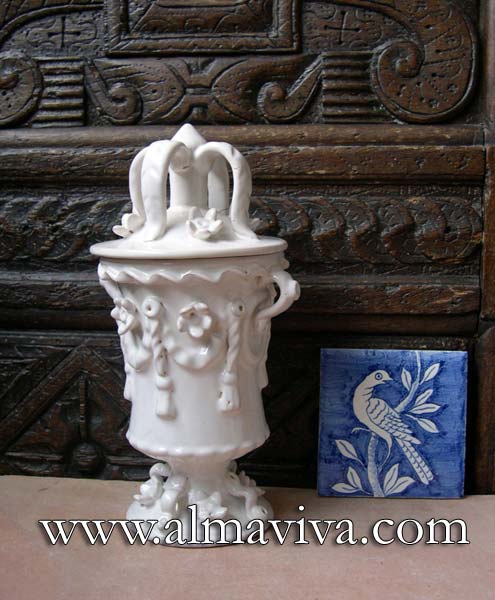
Ref. 627 - Small jar with lid - H 26 cm (about 10,2'')

Ref. 773 - Pitcher - dim 18x21cm (about 7''x8'')
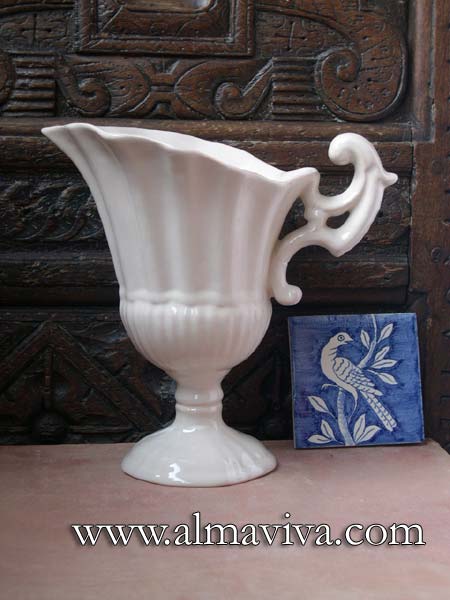
Ref. 45 - Ewer - H 24 cm (about 9,4'')
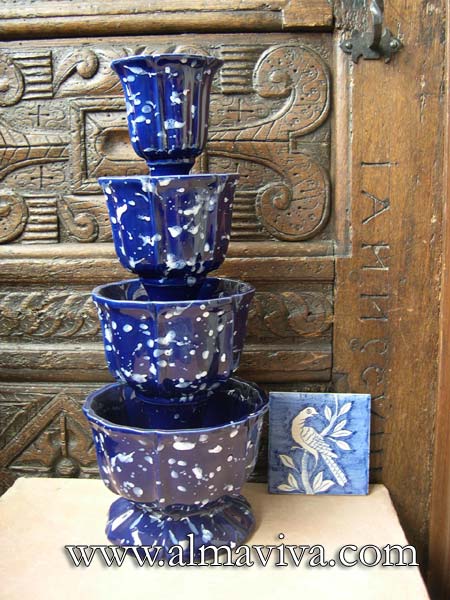
Ref. 587 - Tulip-shaped vase - H 42 cm (about 16,5''). Décor made with a candle, Nevers 16th c.
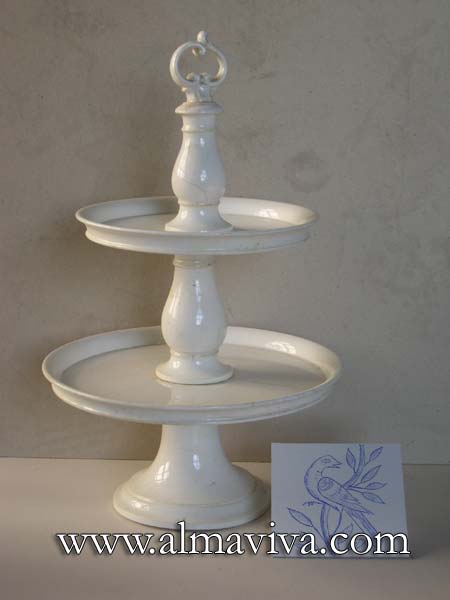
Ref. 759-1 - Tray 2 levels
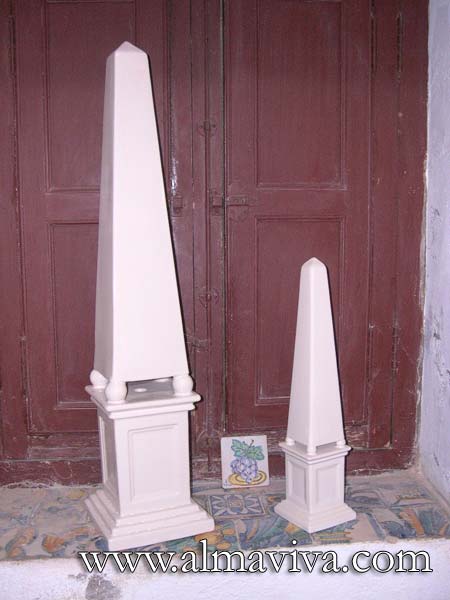
Ref. 258 & 259 - Obelisk - H 88 cm (about 2,9') & H 50 cm (about 1,6')
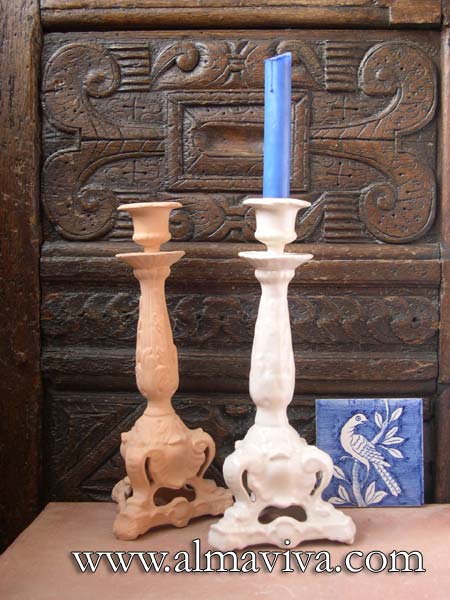
Ref. 210 - Candlestick - H 30 cm (about 11,8''). Pattern from the 18th c. One is a simple biscuit and the other one is enamelled in white
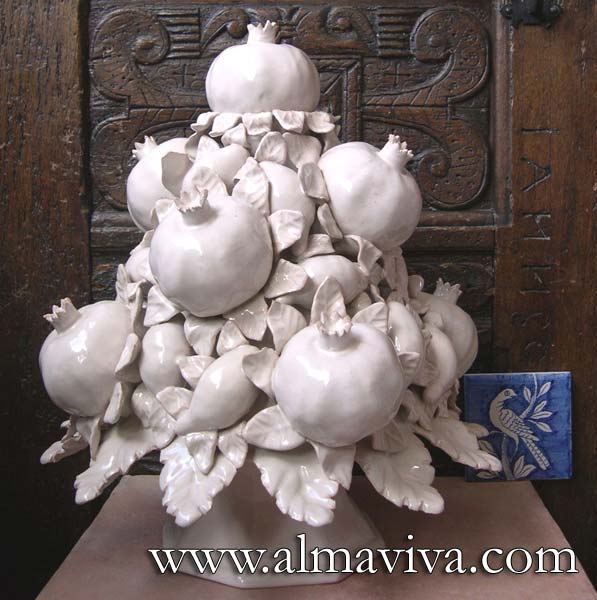
Ref. 255 - Pyramid of fruits - H 46 cm (about 18,1'')
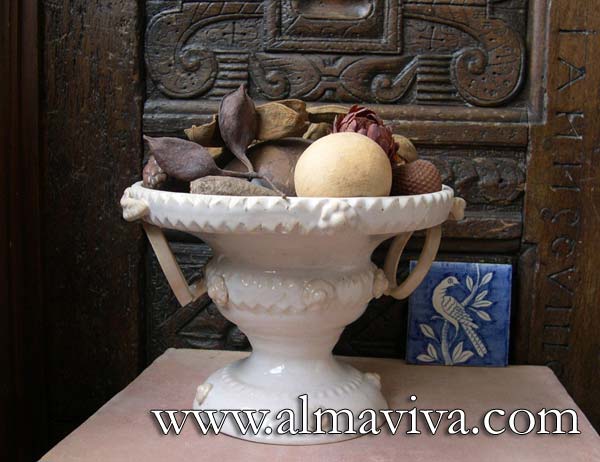
Ref. 607 - Fruit dish - H 19 cm (about 7,5'')
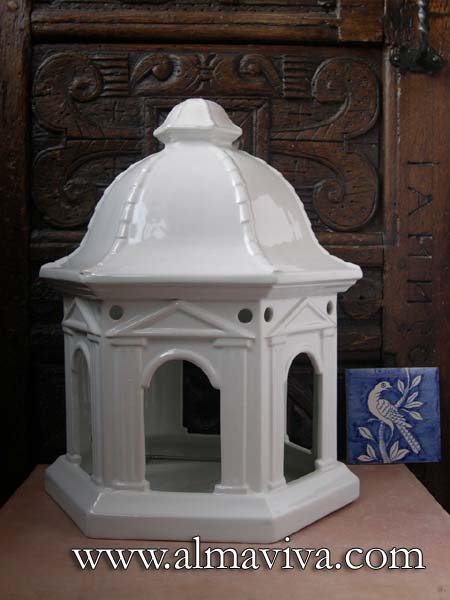
Ref. 910 - Lantern - H 39 cm (about 1,3')
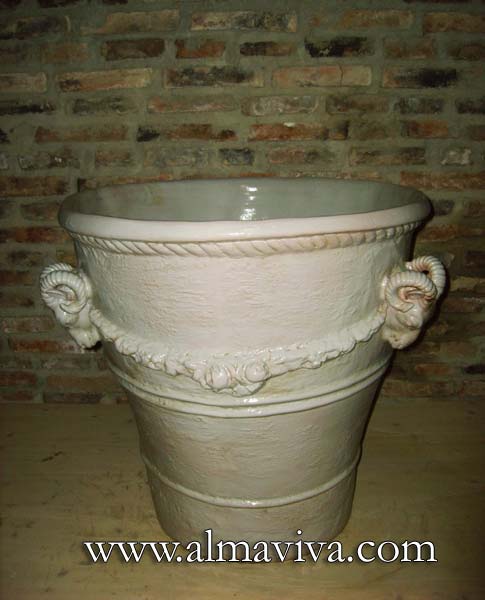
Ref. 439 - Plant tub - H 64 cm (about 2')
Visit our gallery of Art Nouveau ceramic tiles and murals.
View Picture
View Picture
View Picture
View Picture
View Picture
View Picture
View Picture
View Picture
View Picture
View Picture
View Picture
View Picture
View Picture
View Picture
View Picture
View Picture
View Picture
View Picture
View Picture
View Picture
View Picture
View Picture
View Picture
View Picture
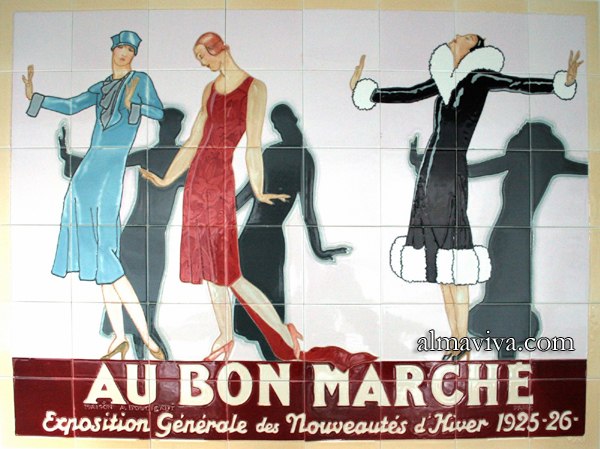
Ref. AN52 - Advertising for Le Bon Marché, Parisian department store. Ceramic panel 120x90 cm
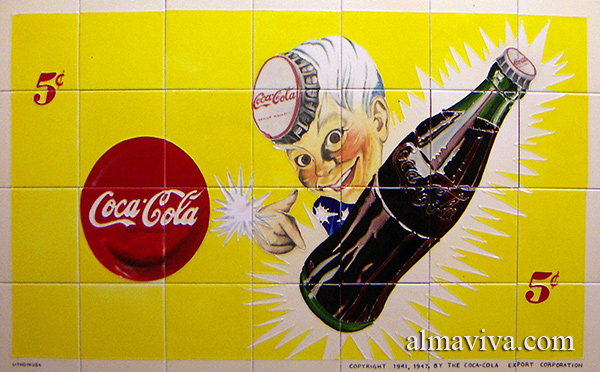
Ref. AN53 - Advertising for Coca Cola on ceramic tiles. Size 105x60 cm
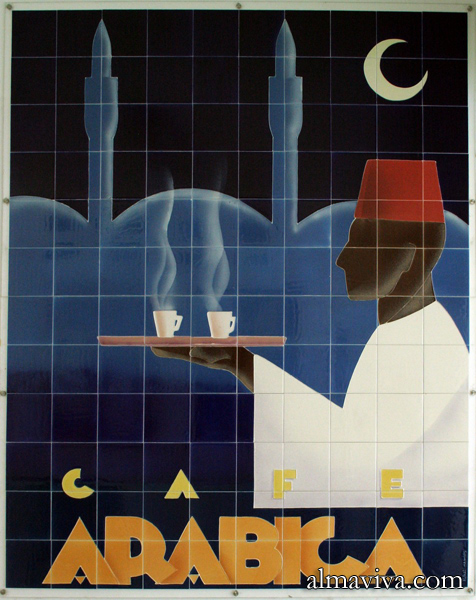
Ref. AN54 - Advertising for Arabica coffee. Ceramic panel. Size 150x180 cm
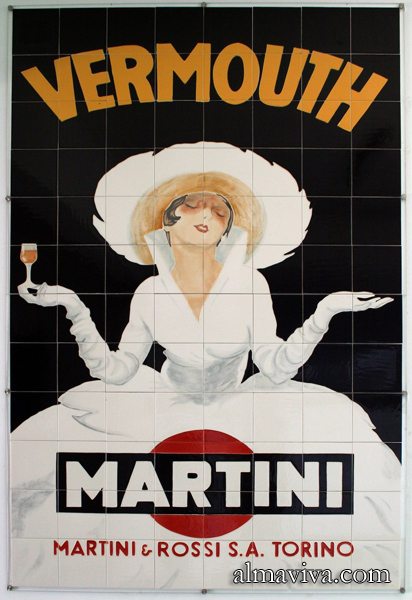
Ref. AN55 - Advertising for Martini. Ceramic panel. Size 120x180 cm
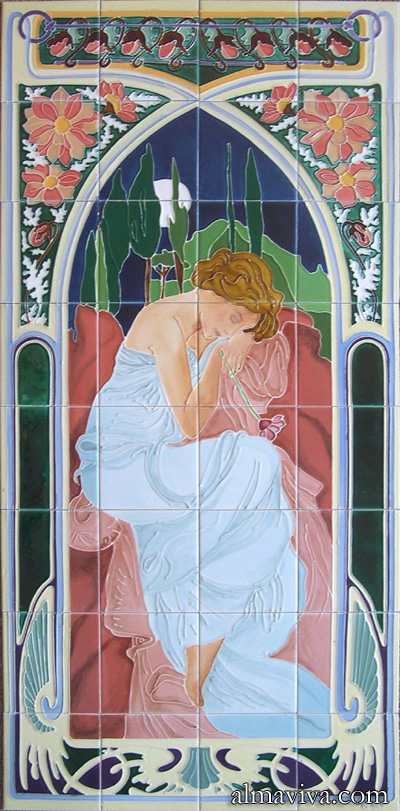
Ref. AN 50 - Reproduction on ceramic tiles of Alfons Mucha lithography Rest of the Night. Size 120x60 cm

Ref. AN51 - Ceramic panels Art Nouveau inspired by Alfonse Mucha.
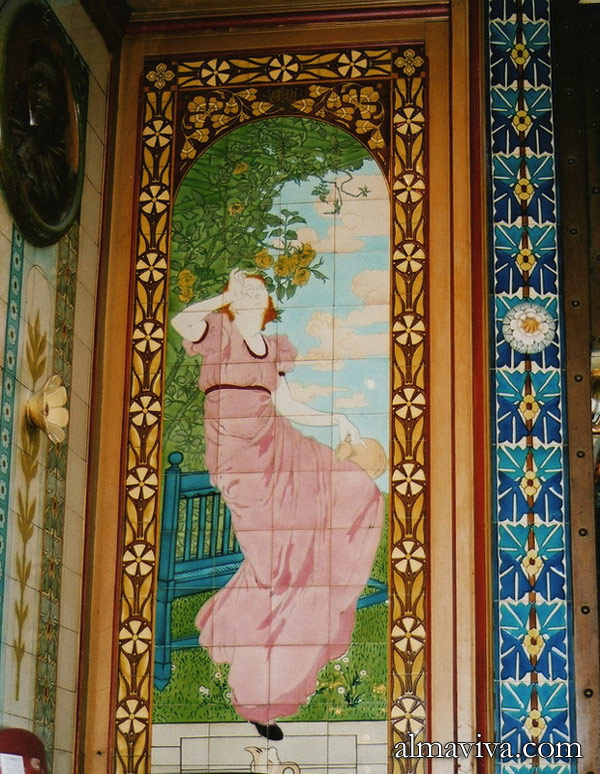
Ref. AN56 - A ceramic decoration like that of the French pub La Cigale in Nantes can serve as a model for a future realization
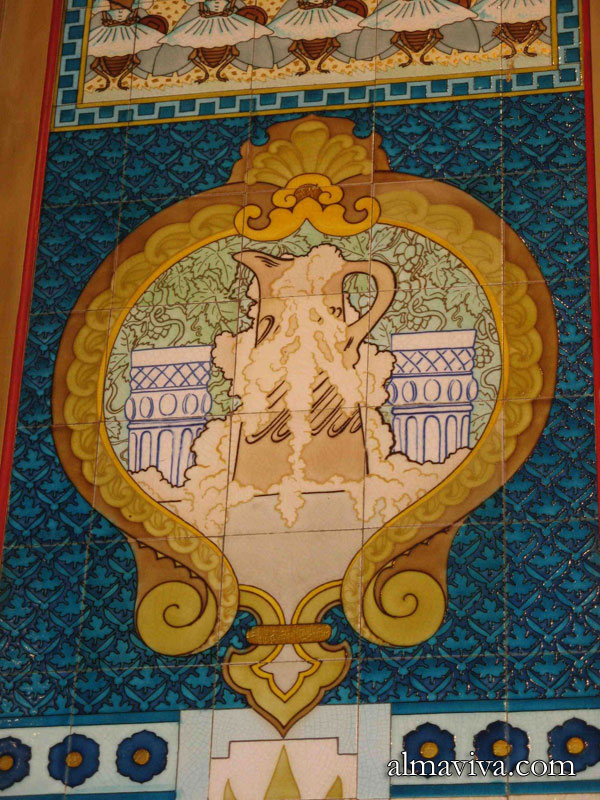
Ref. AN56 - A detail of the tiles decorating the pub La Cigale in Nantes.
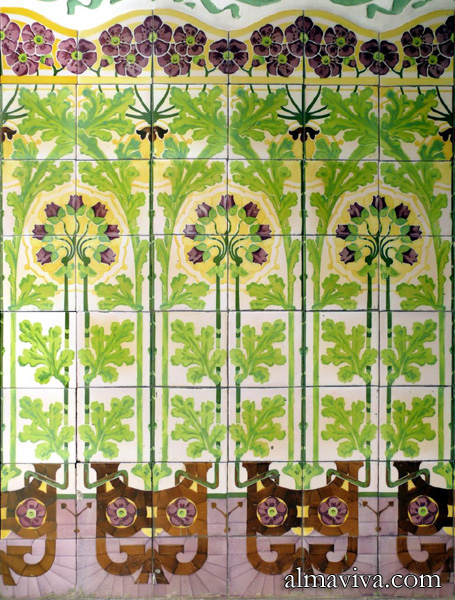
Ref. AN57 - Ceramic Art nouveau: hall building in Barcelona
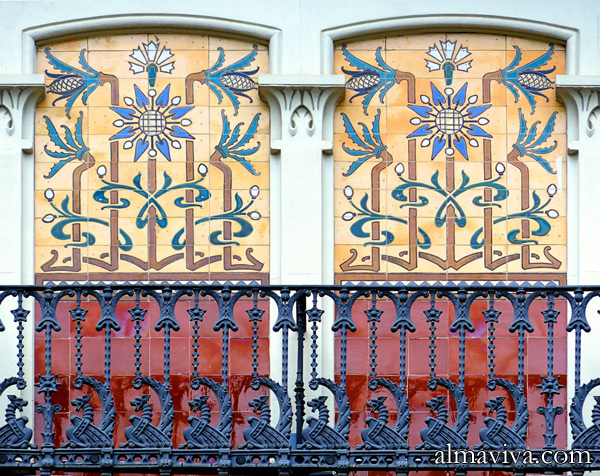
Ref. AN58 - Tile Art nouveau: Casa Batllo in Barcelona
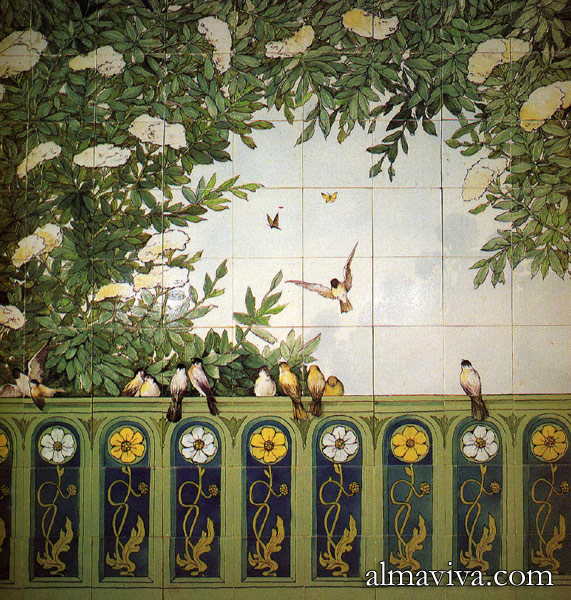
Ref. AN59 - Ceramic panel in the style of Spanish Modernismo (Museum of Mallorca).
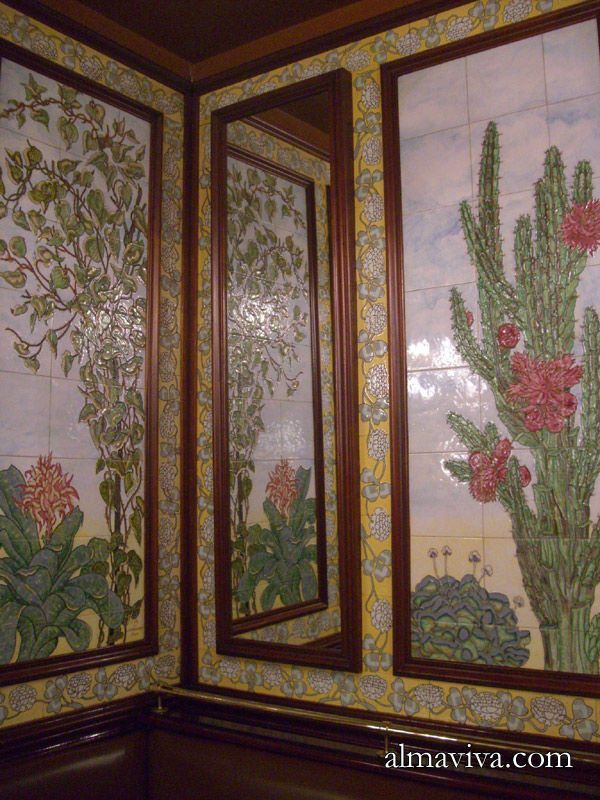
Ref. AN60 - For inspiration, the ceramic panels of the Brasserie Lipp in Paris
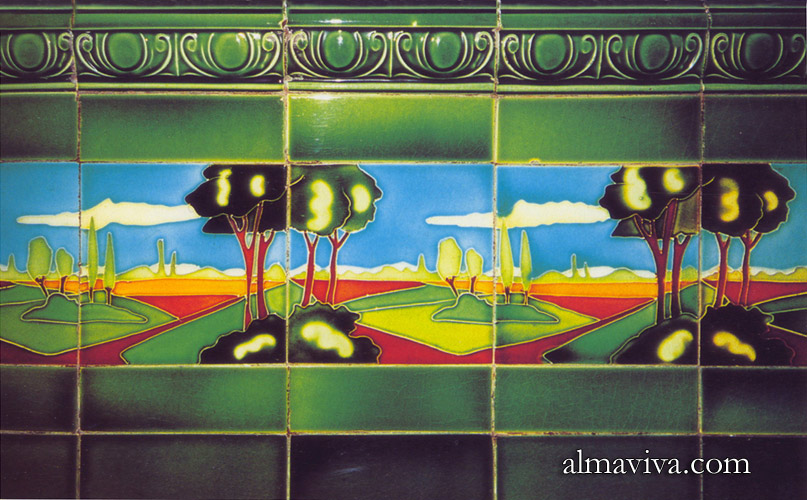
Ref. AN61 - Decor painted in cloisonné, topped with a molded frieze
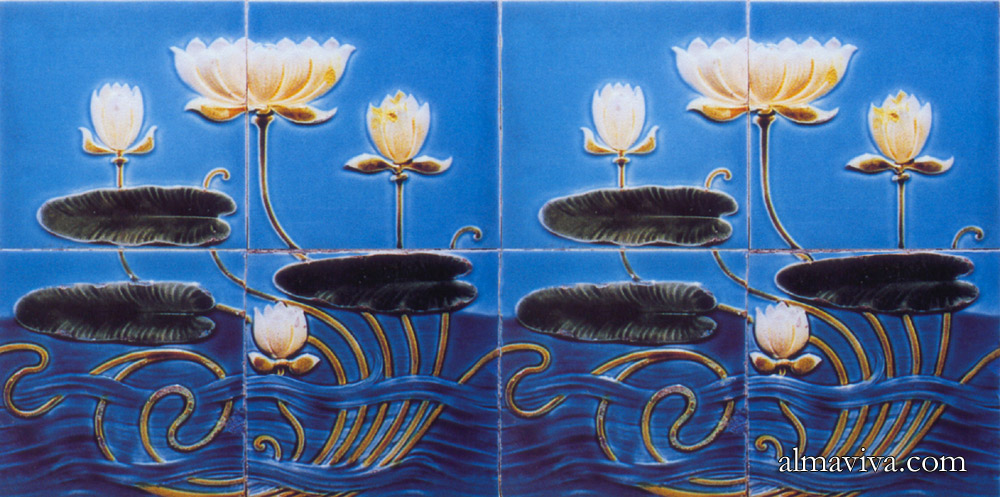
Ref. AN62 - Frieze Art nouveau in relief
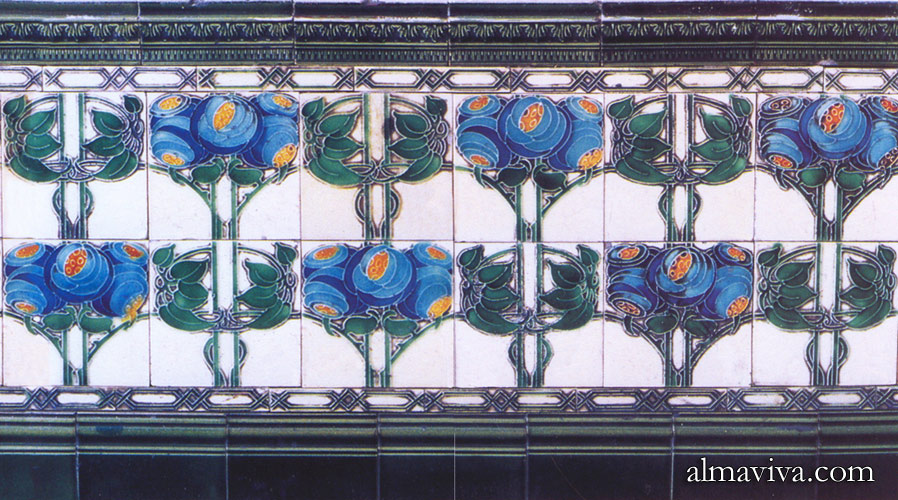
Ref. AN63 - Composition of tiles Art nouveau
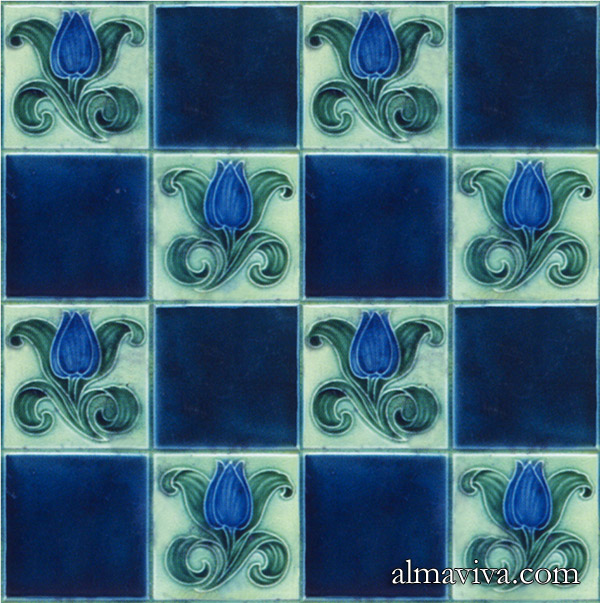
Ref. AN64 - Alternating plain tile and tile with floral pattern
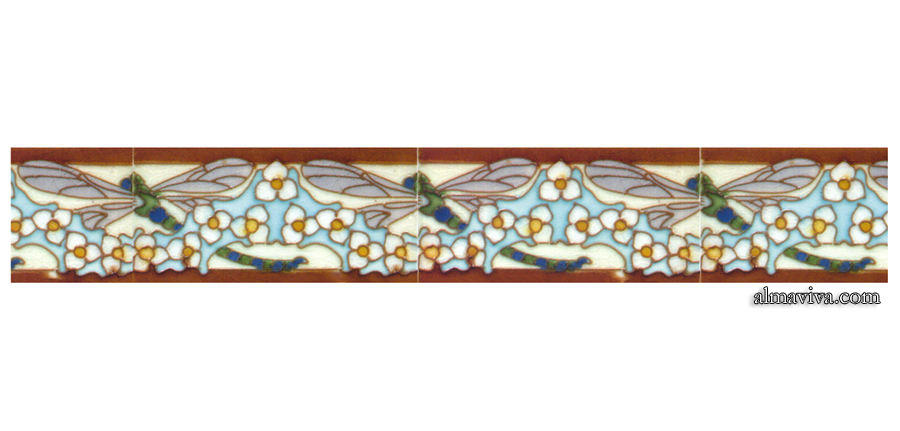
Ref. AN65 - Frieze Dragonfly - Decor cloisonné, Art nouveau style
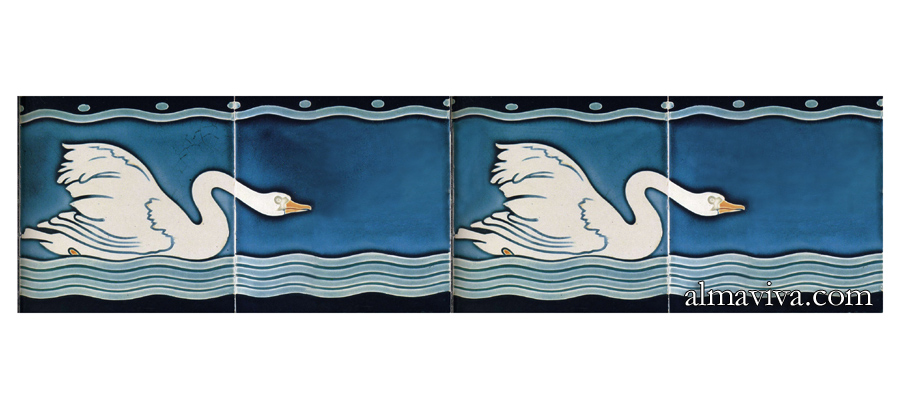
Ref. AN66 - Frieze Swan 1900
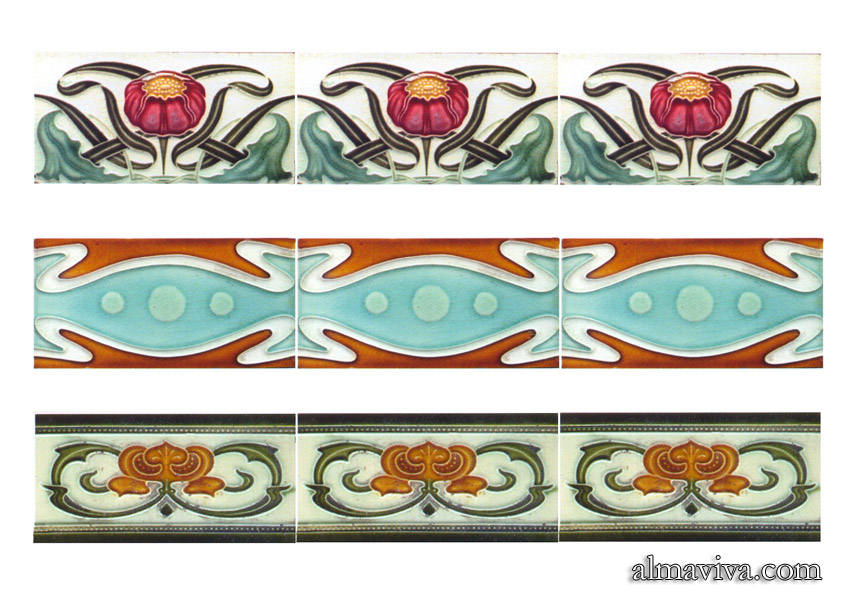
Ref. AN67 - 3 examples of Art nouveau friezes
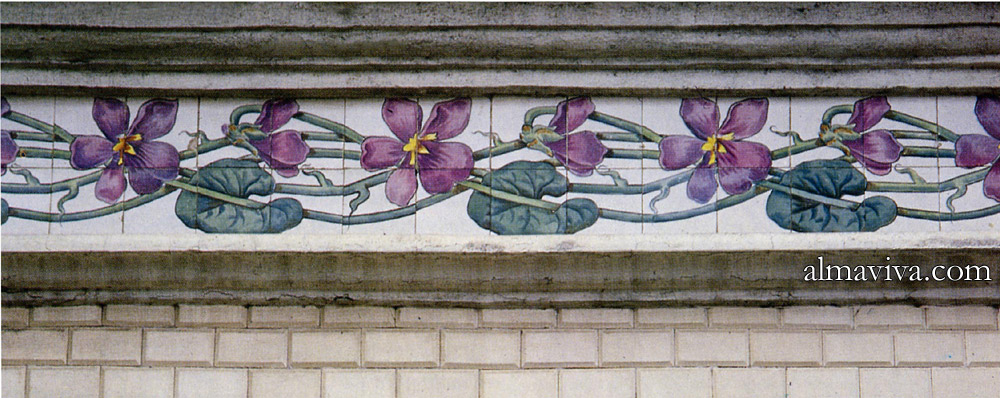
Ref. AN68 - Architectural Ceramics: Wall Frieze
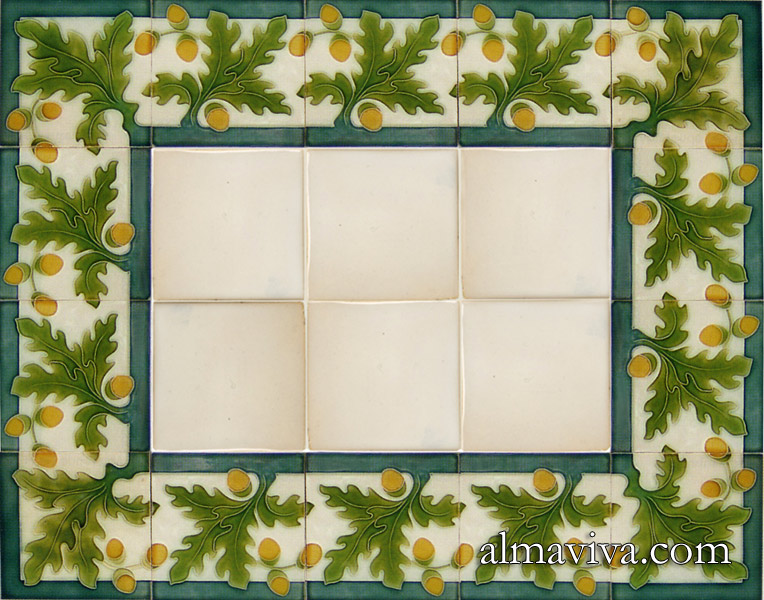
Ref. AN69 - Ceramic framework Oak Leaf
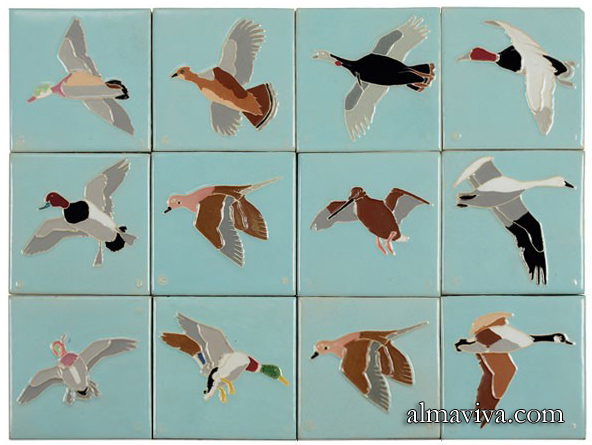
Ref. AN70 - 12 patterns of ducks, cloisonné decor
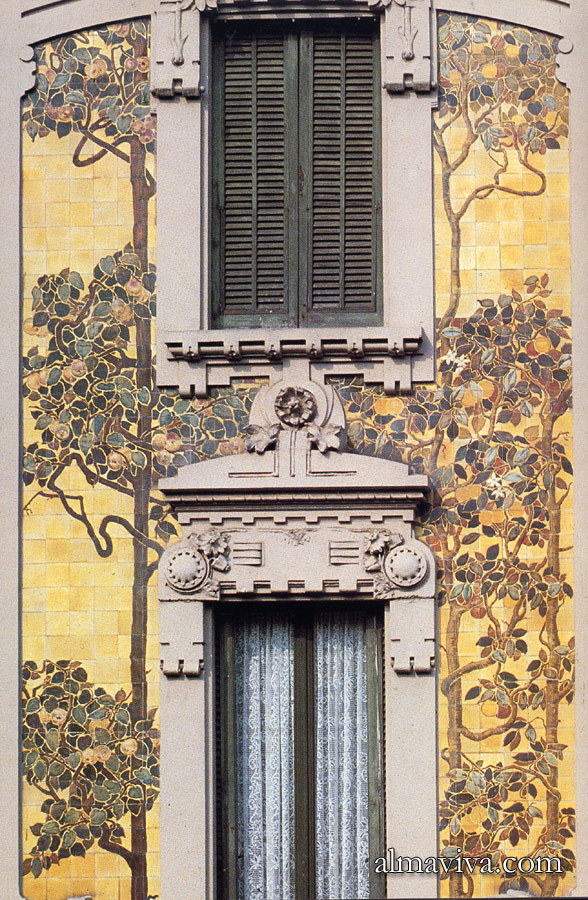
Ref. AN71 - Architectural Ceramics in Milan
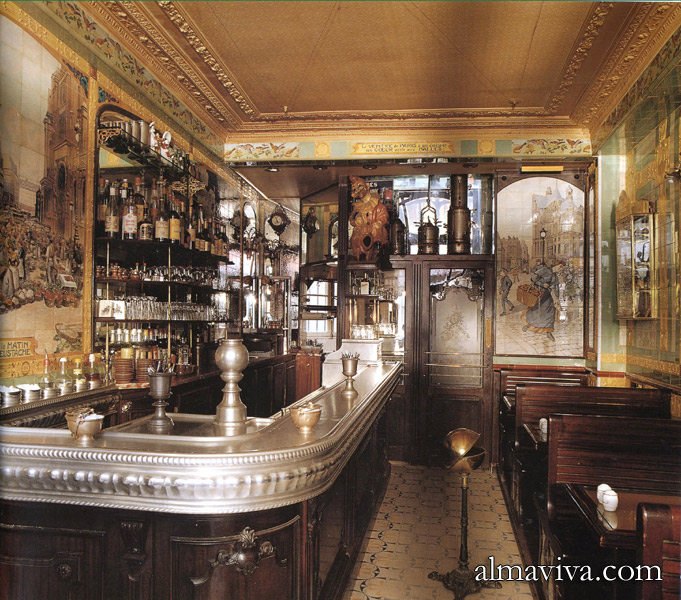
Ref. AN72 - Decoration in a brasserie at Montmartre in Paris, with authentic Art Nouveau ceramic wall panels